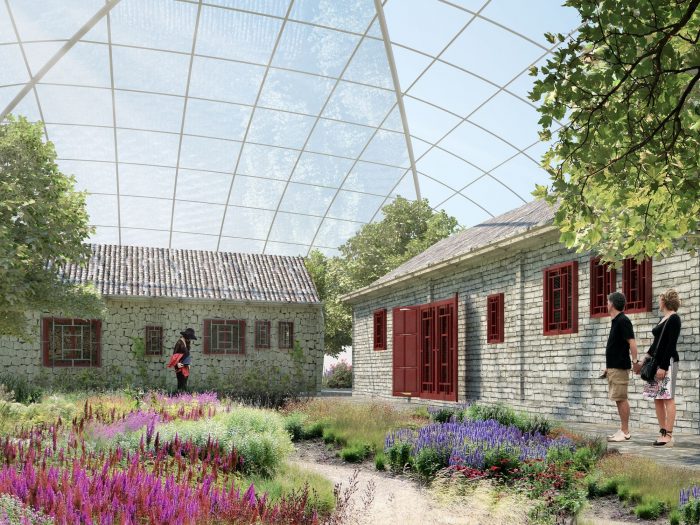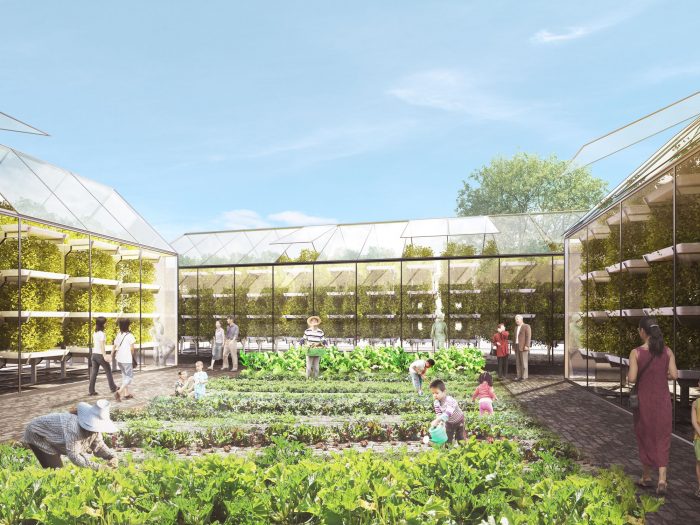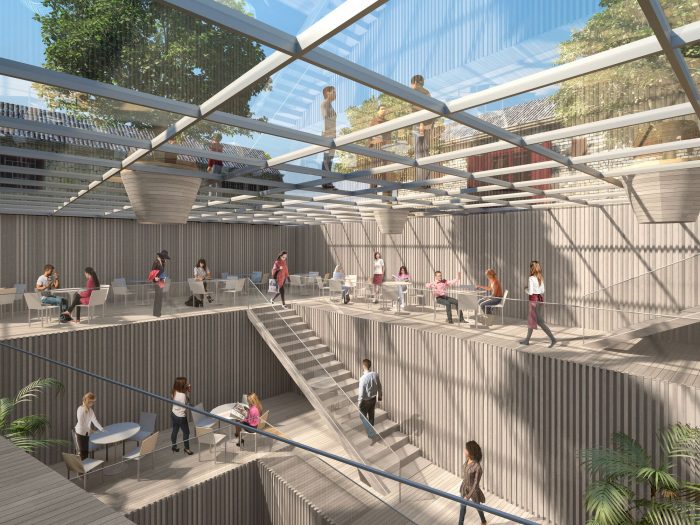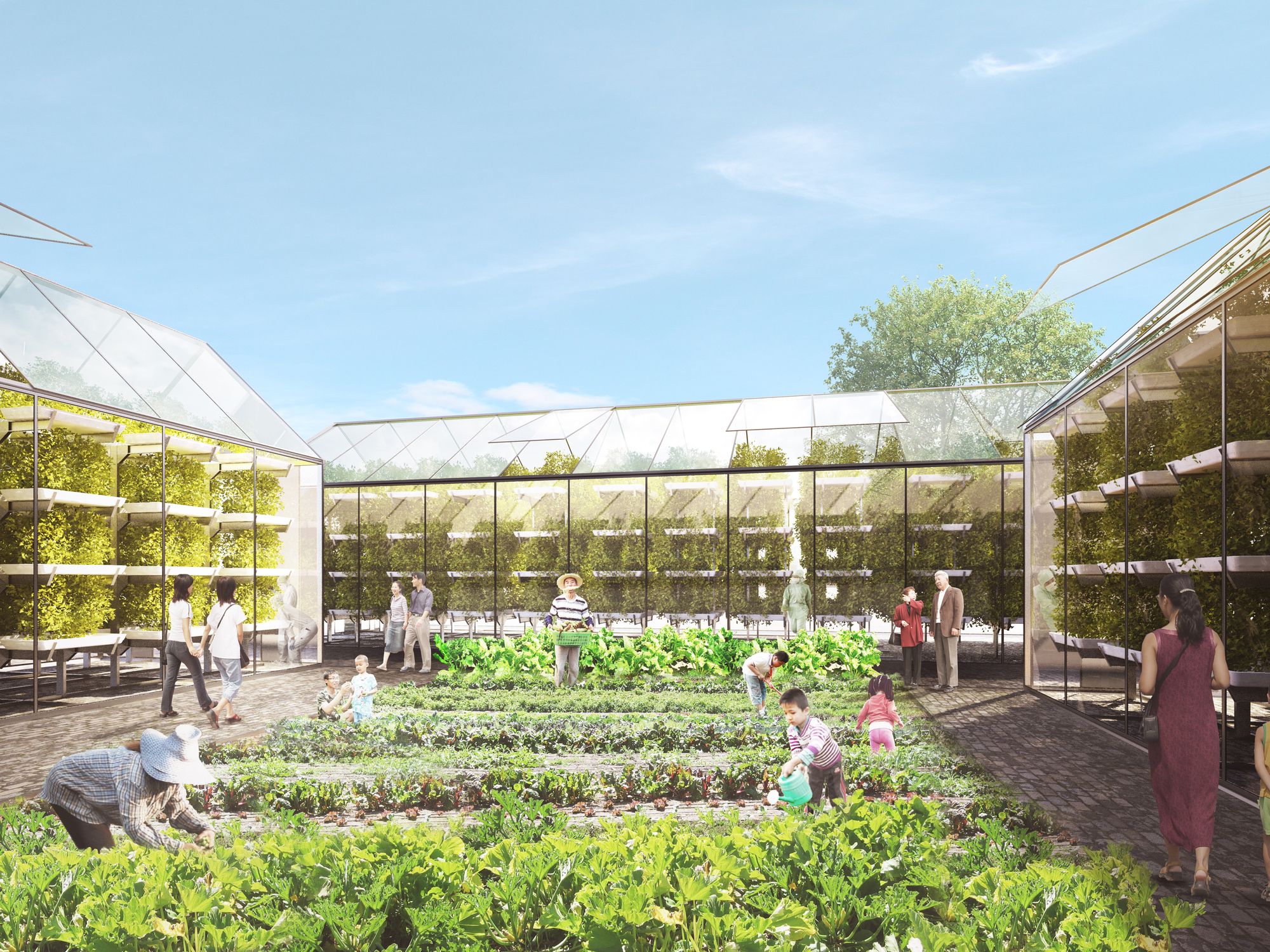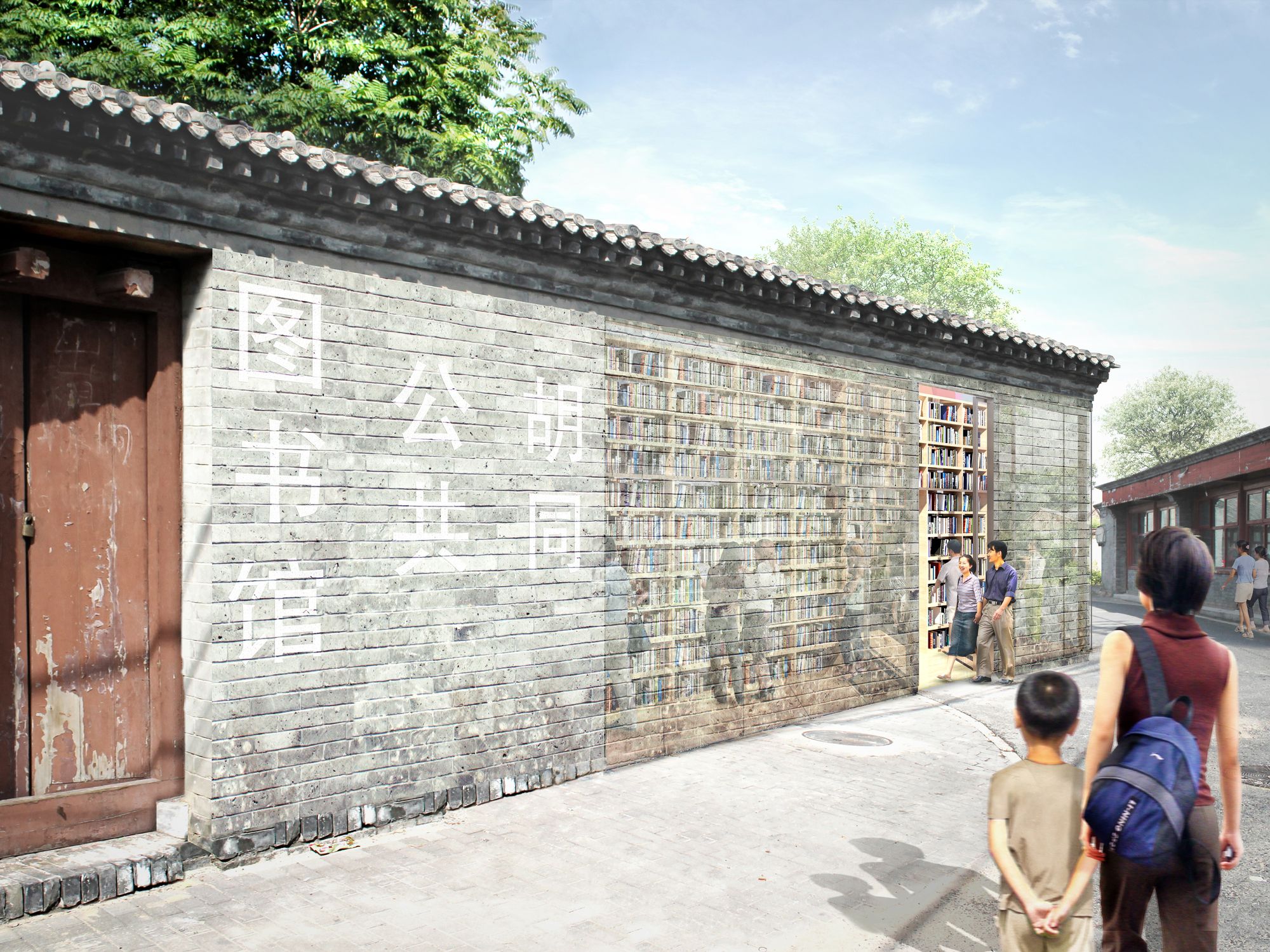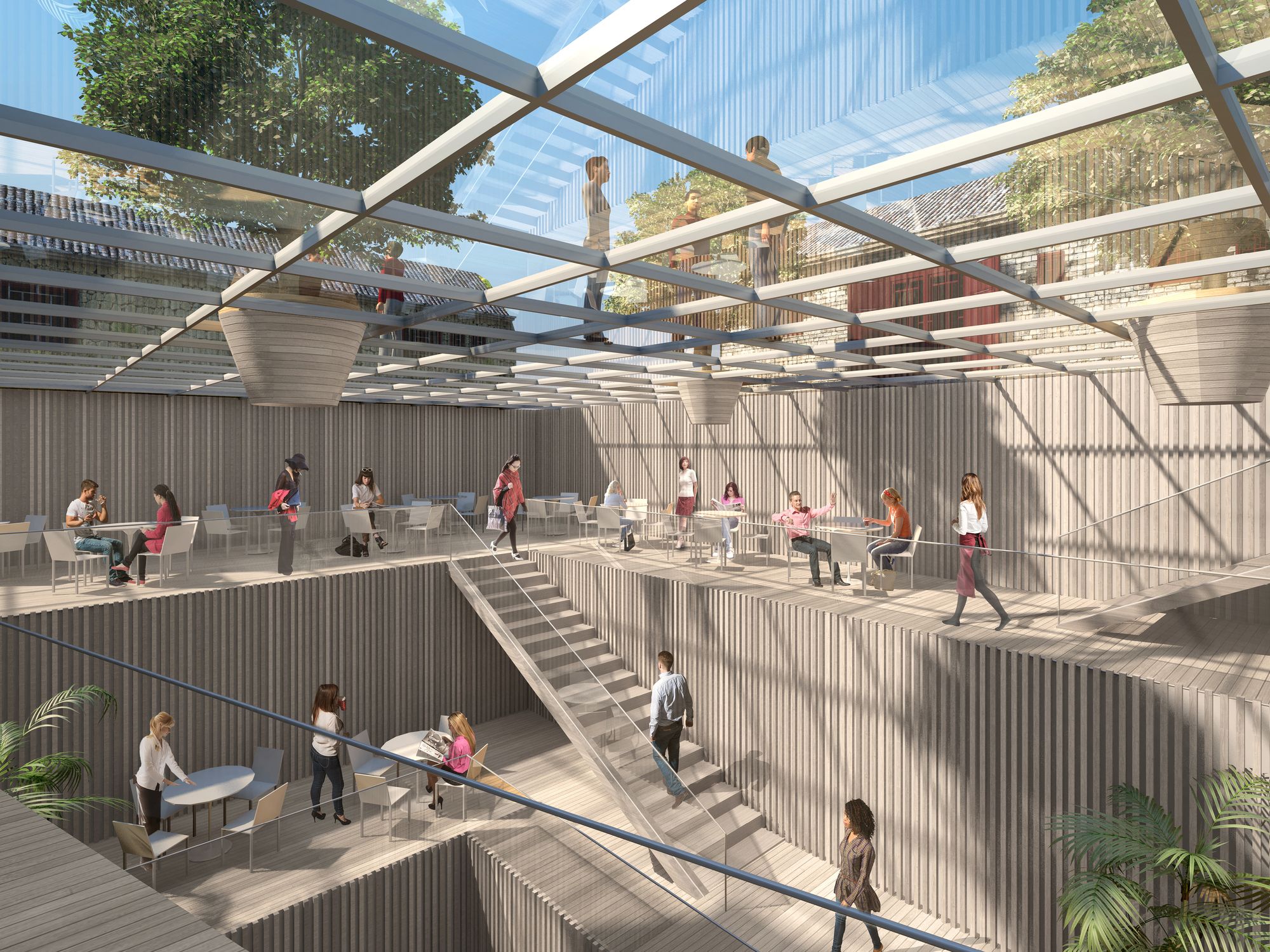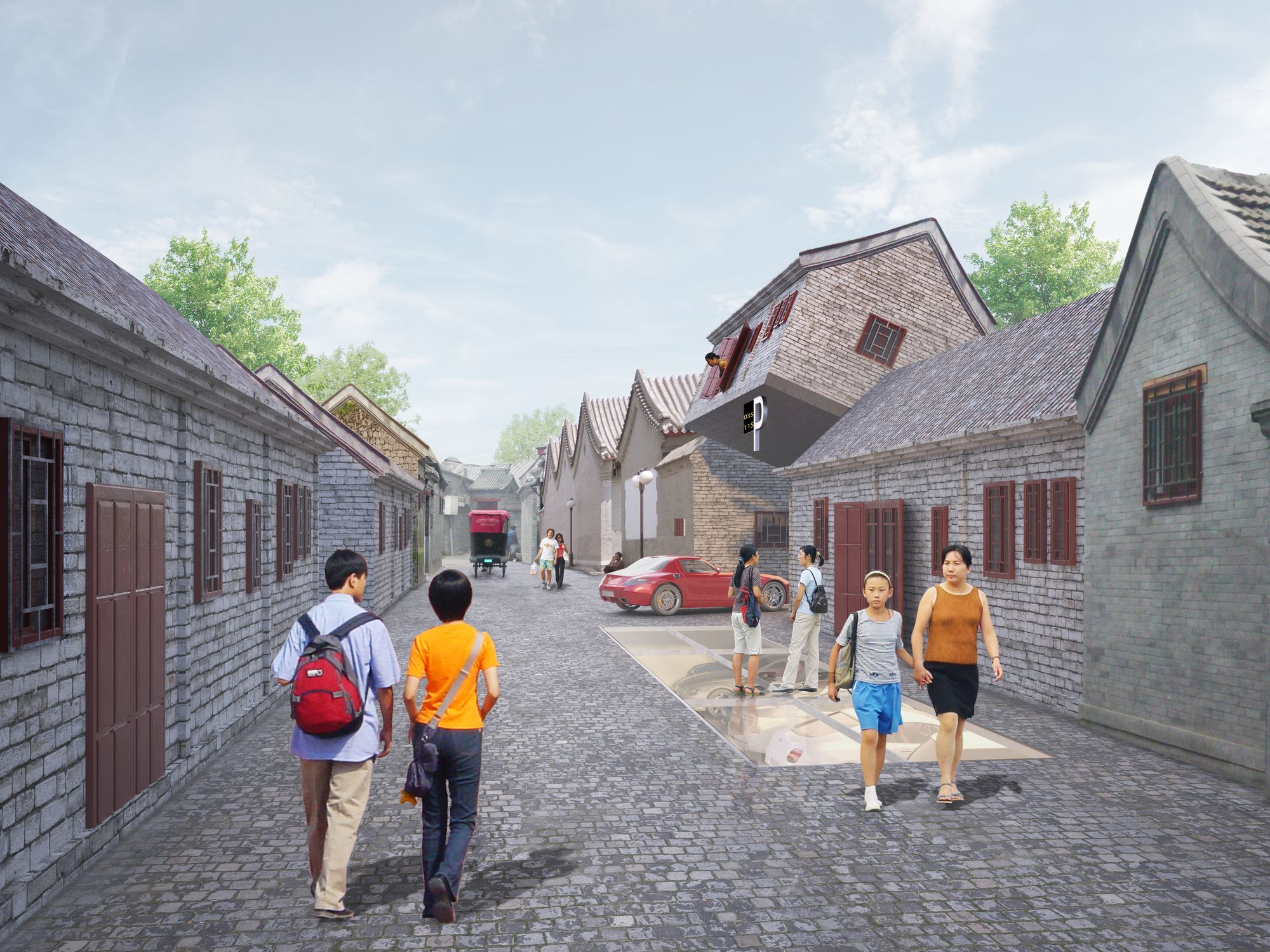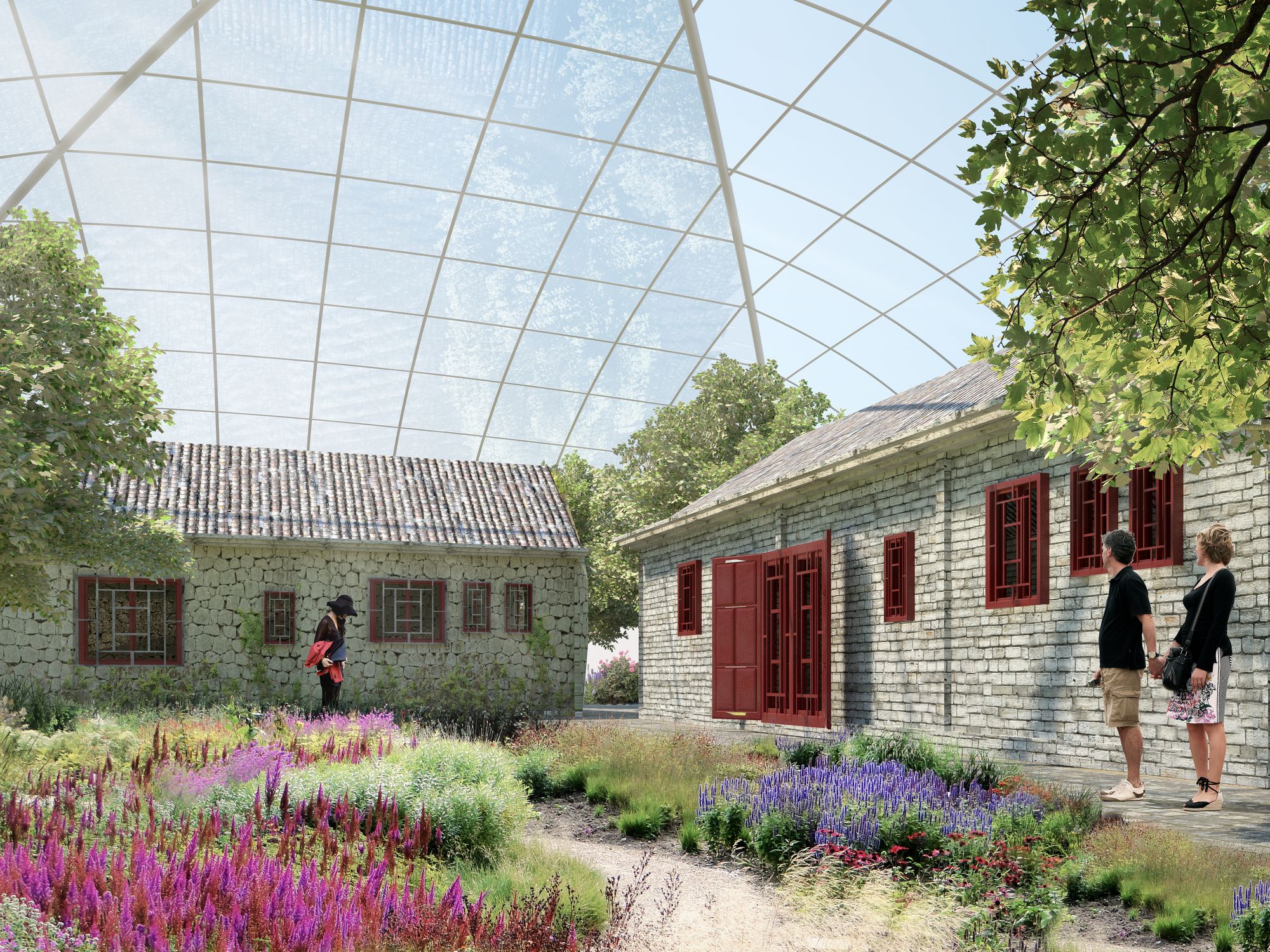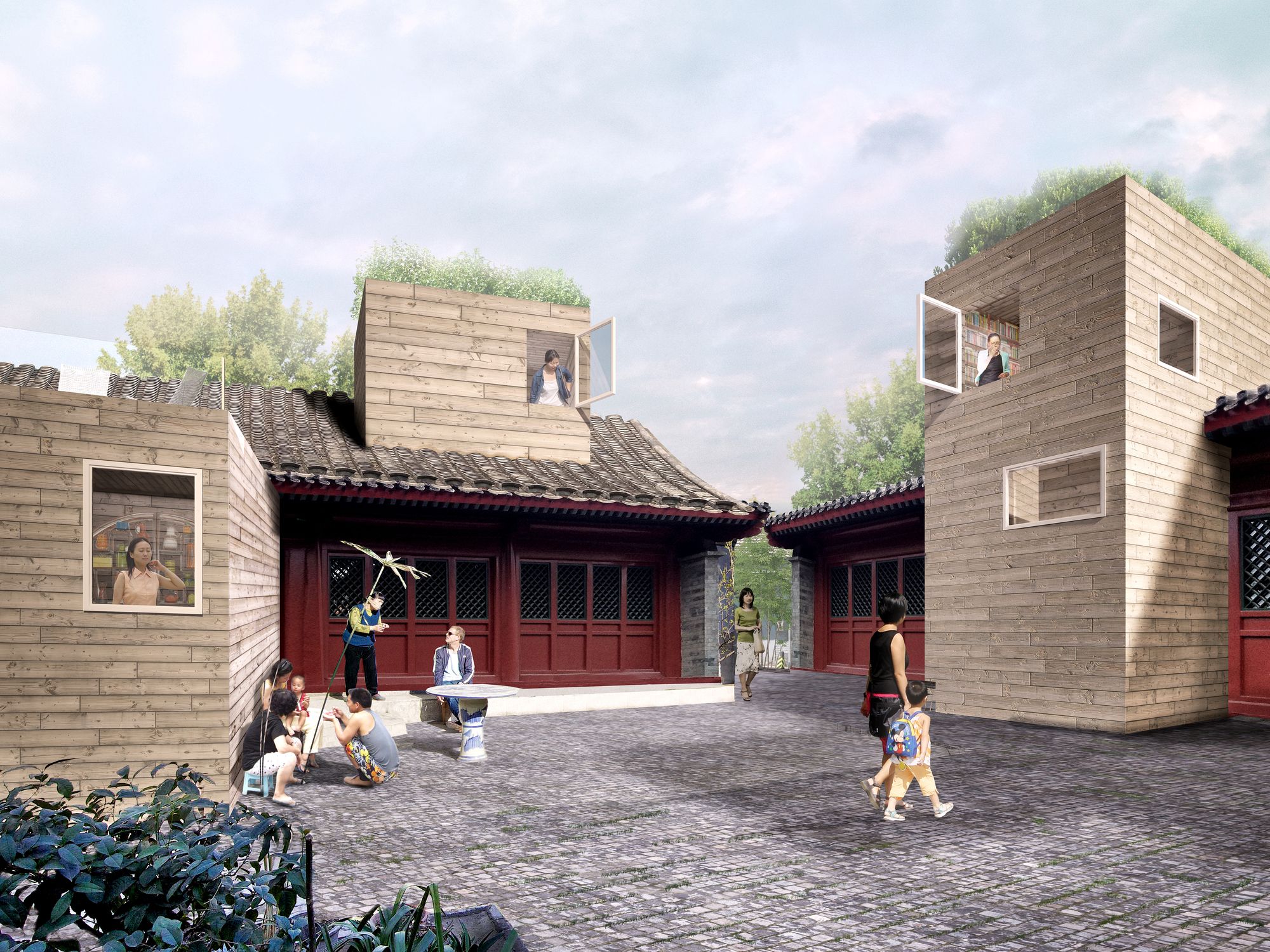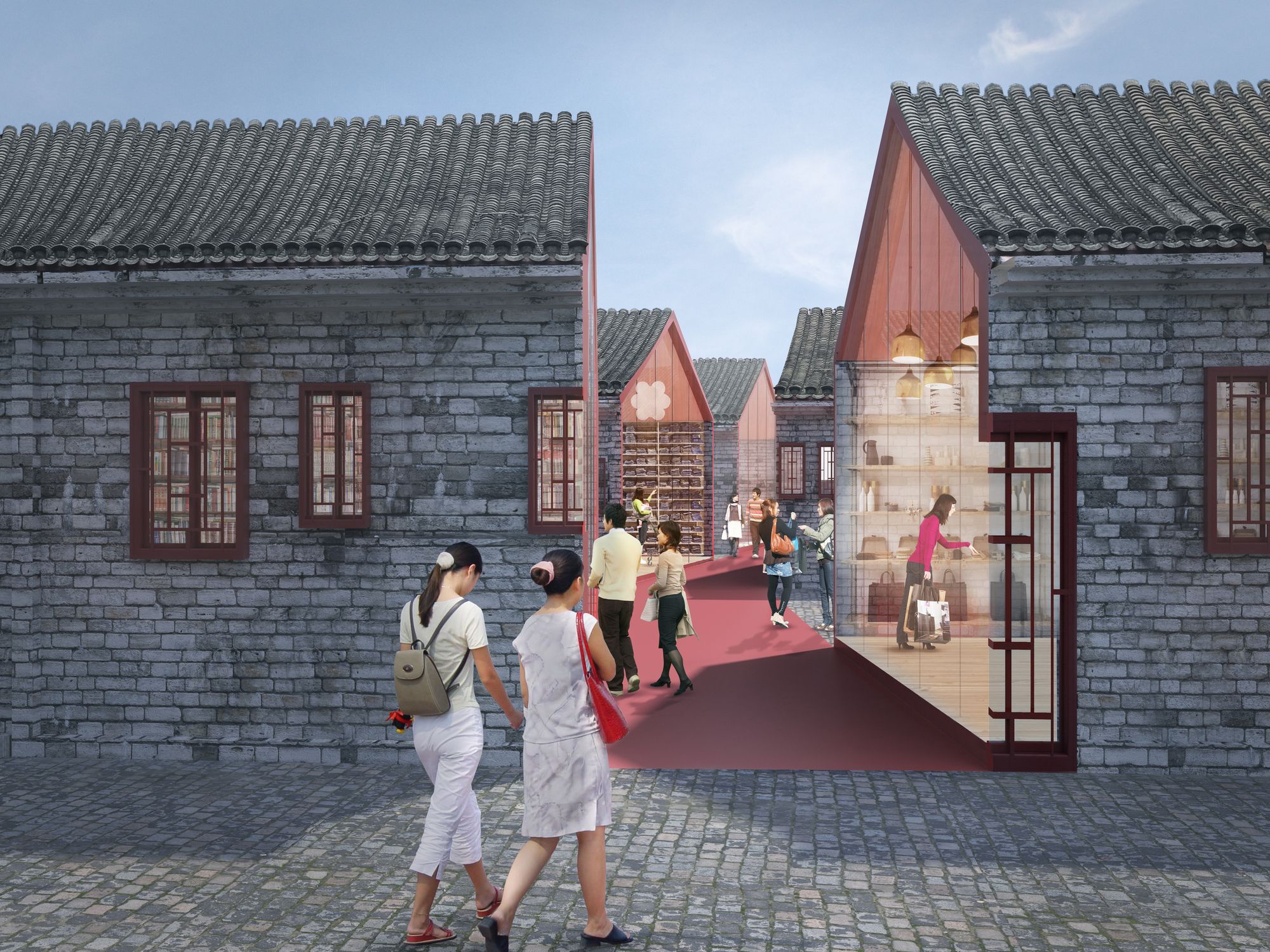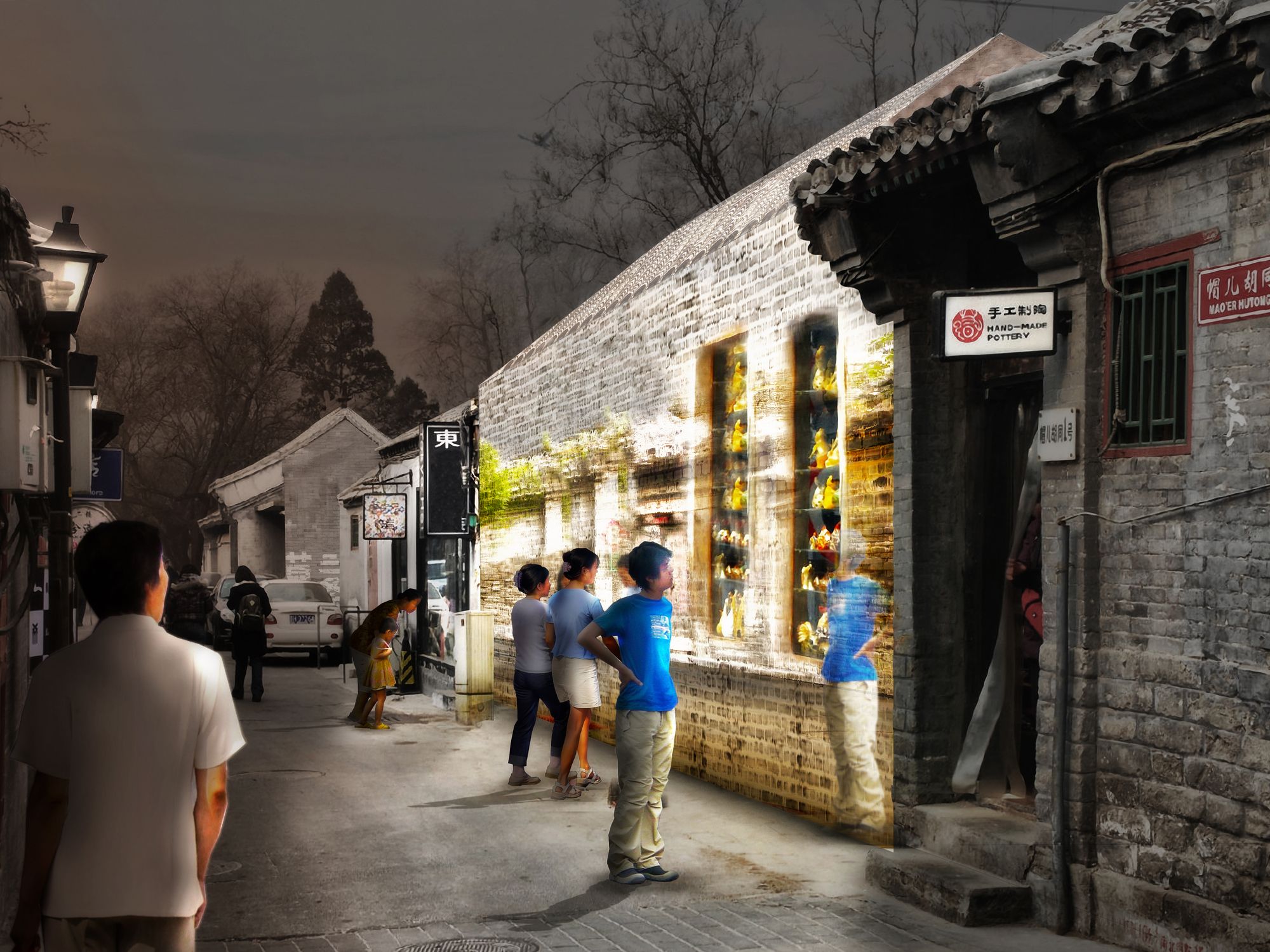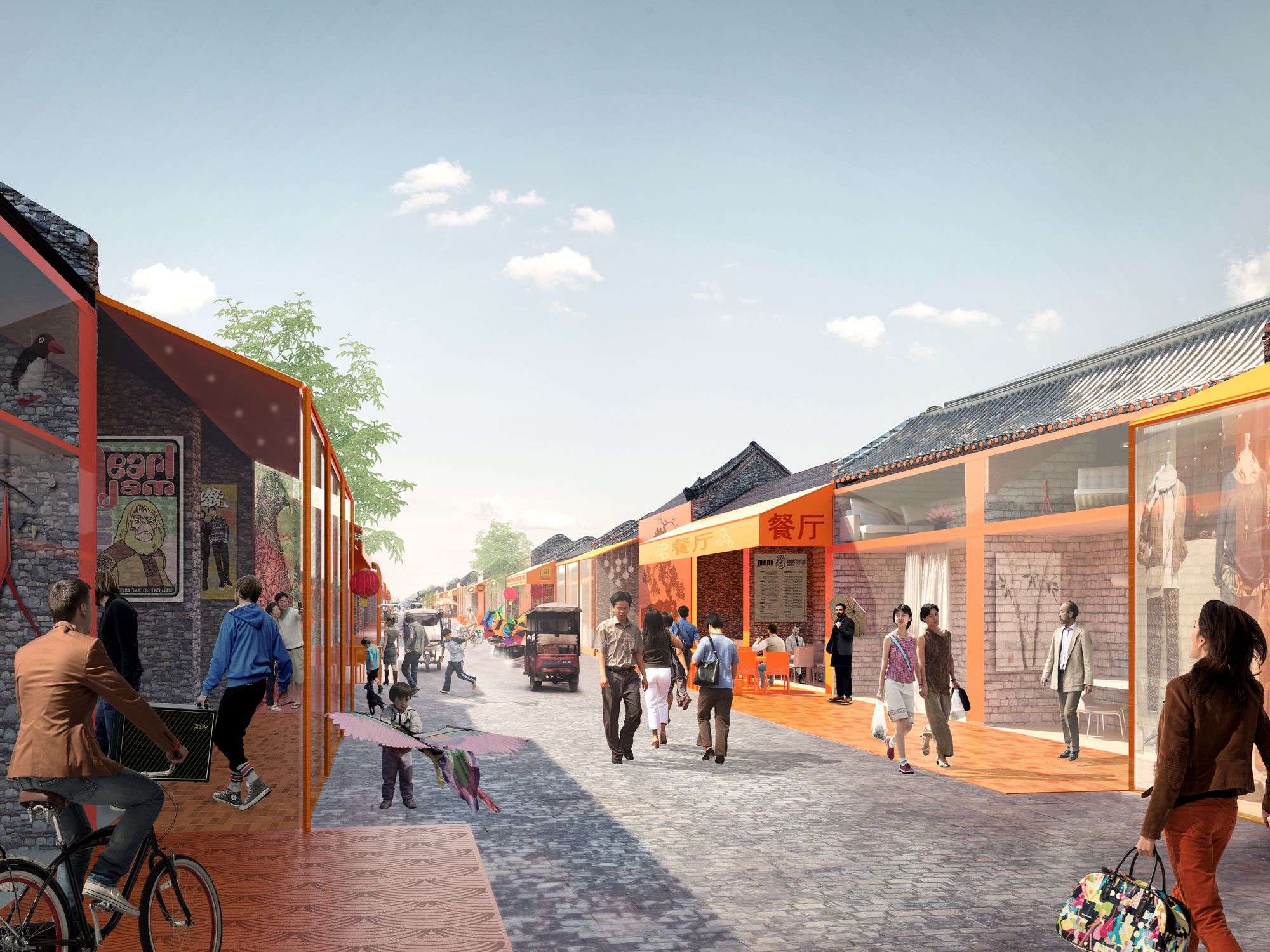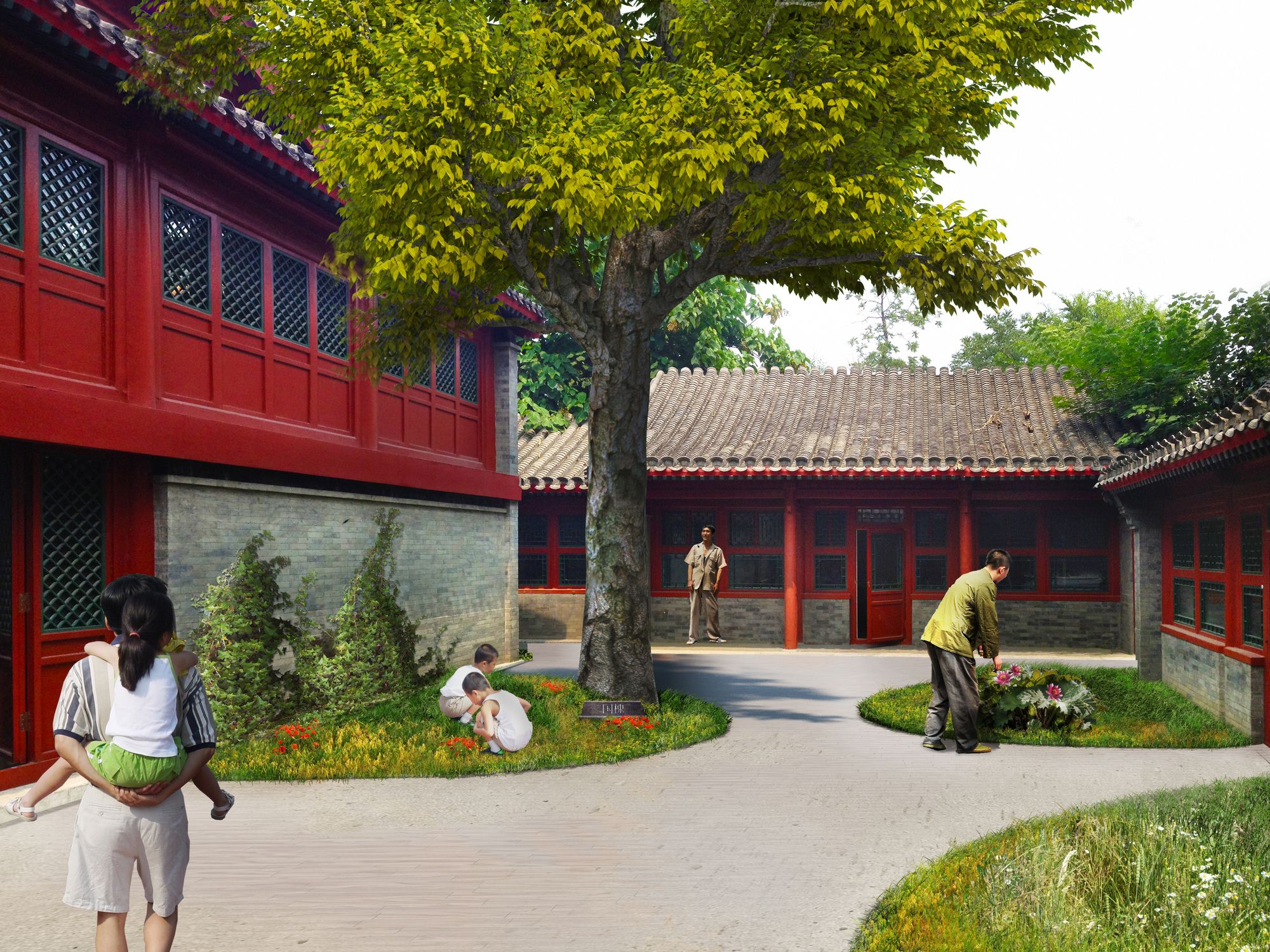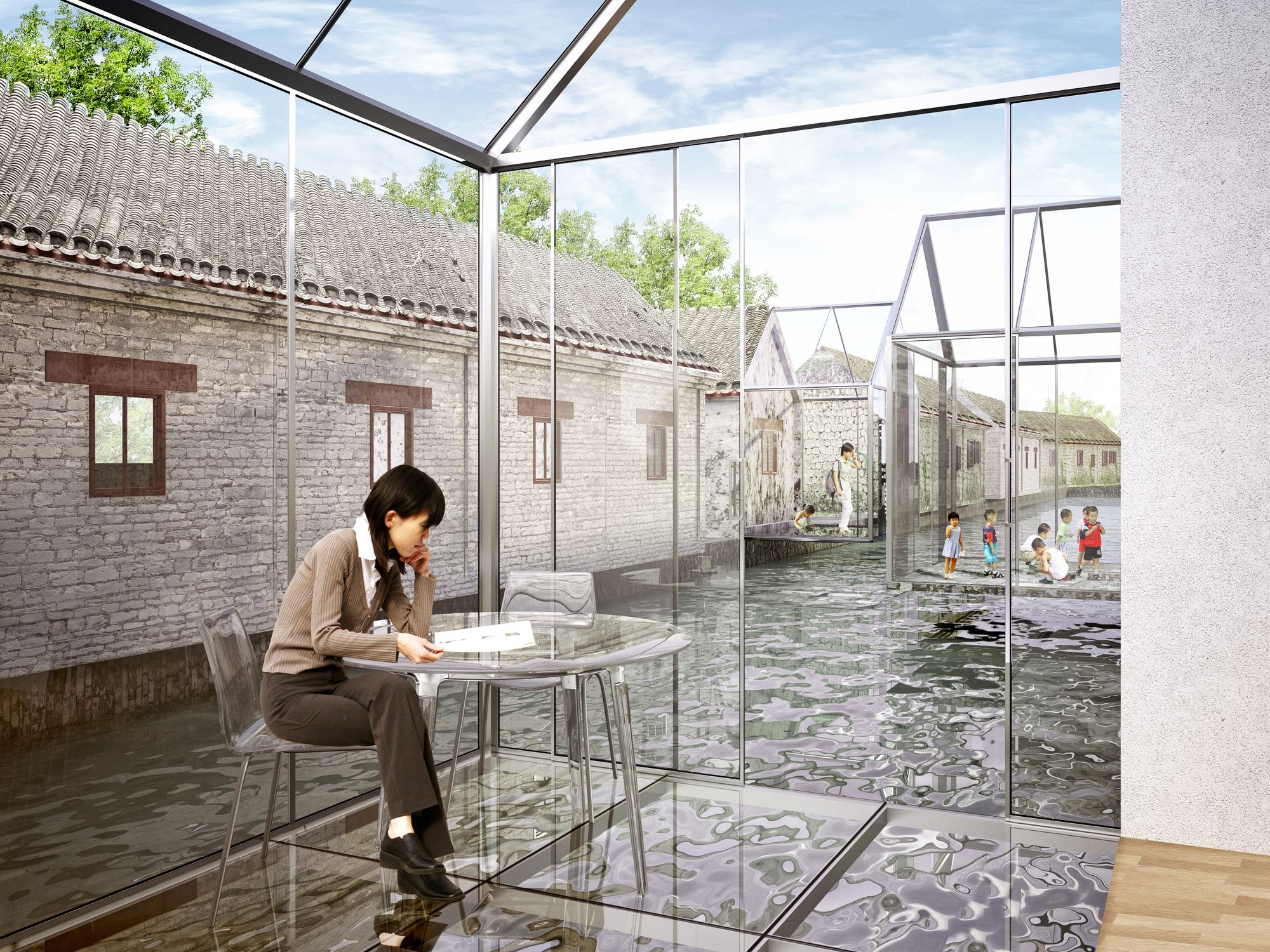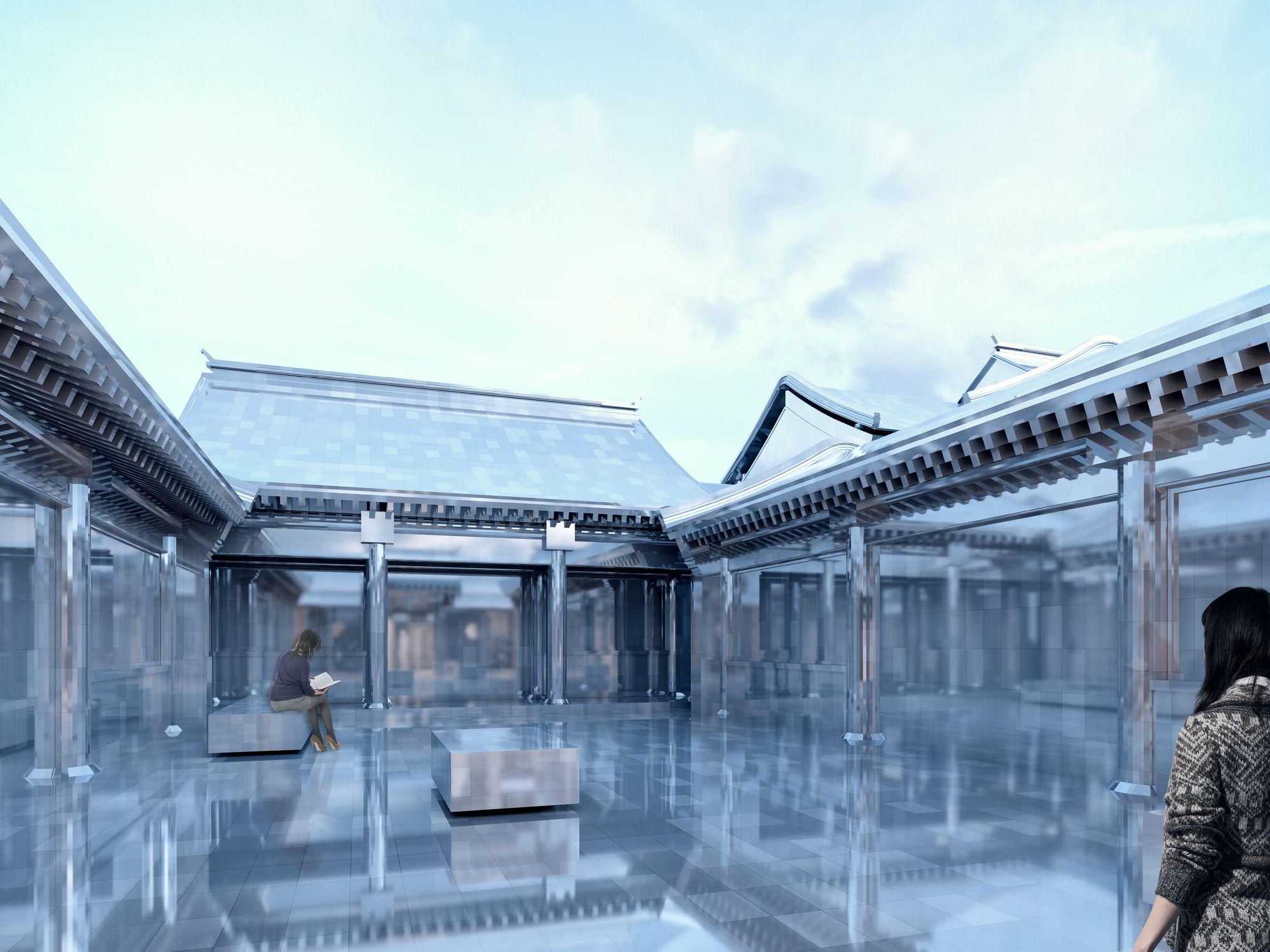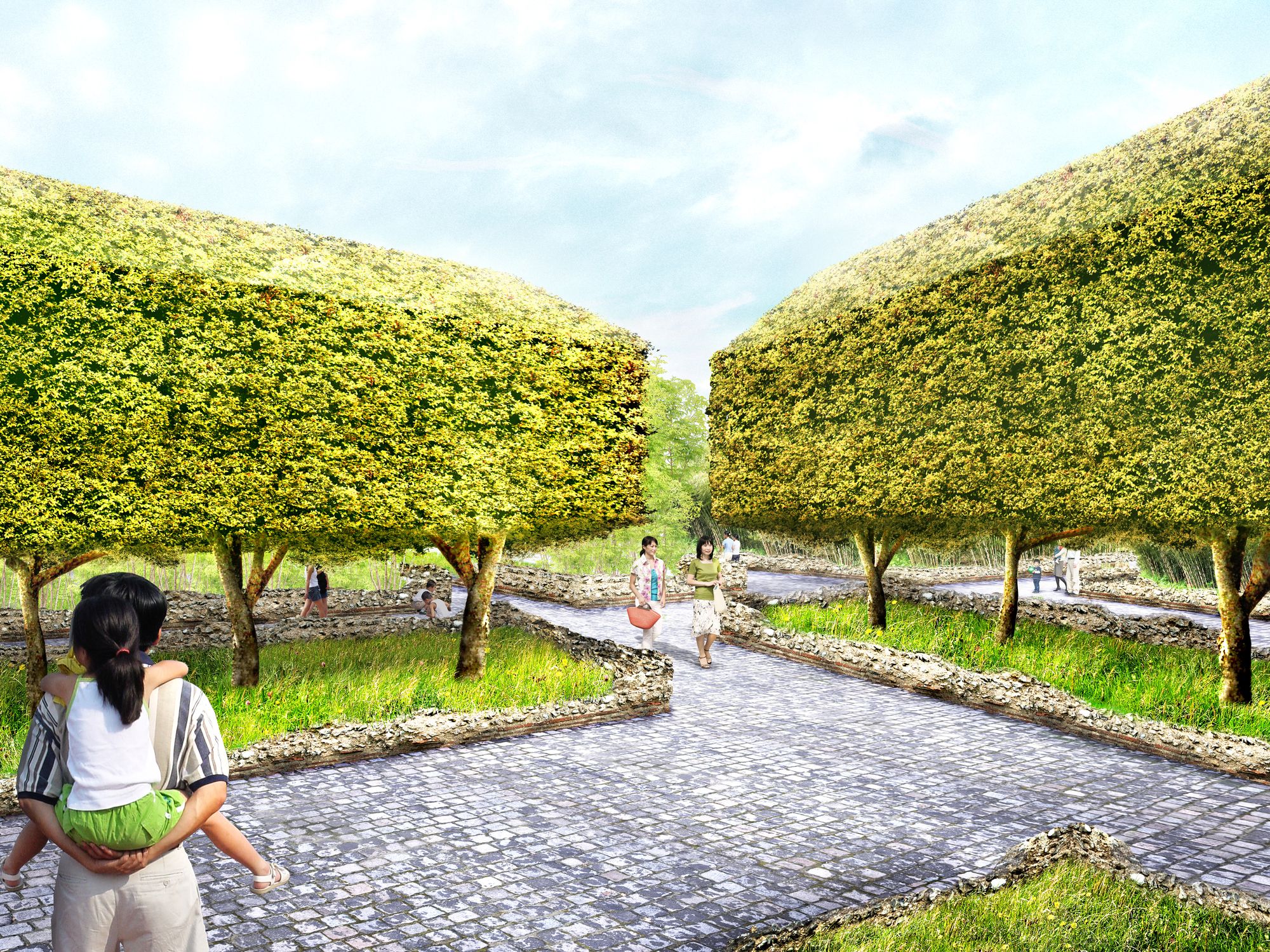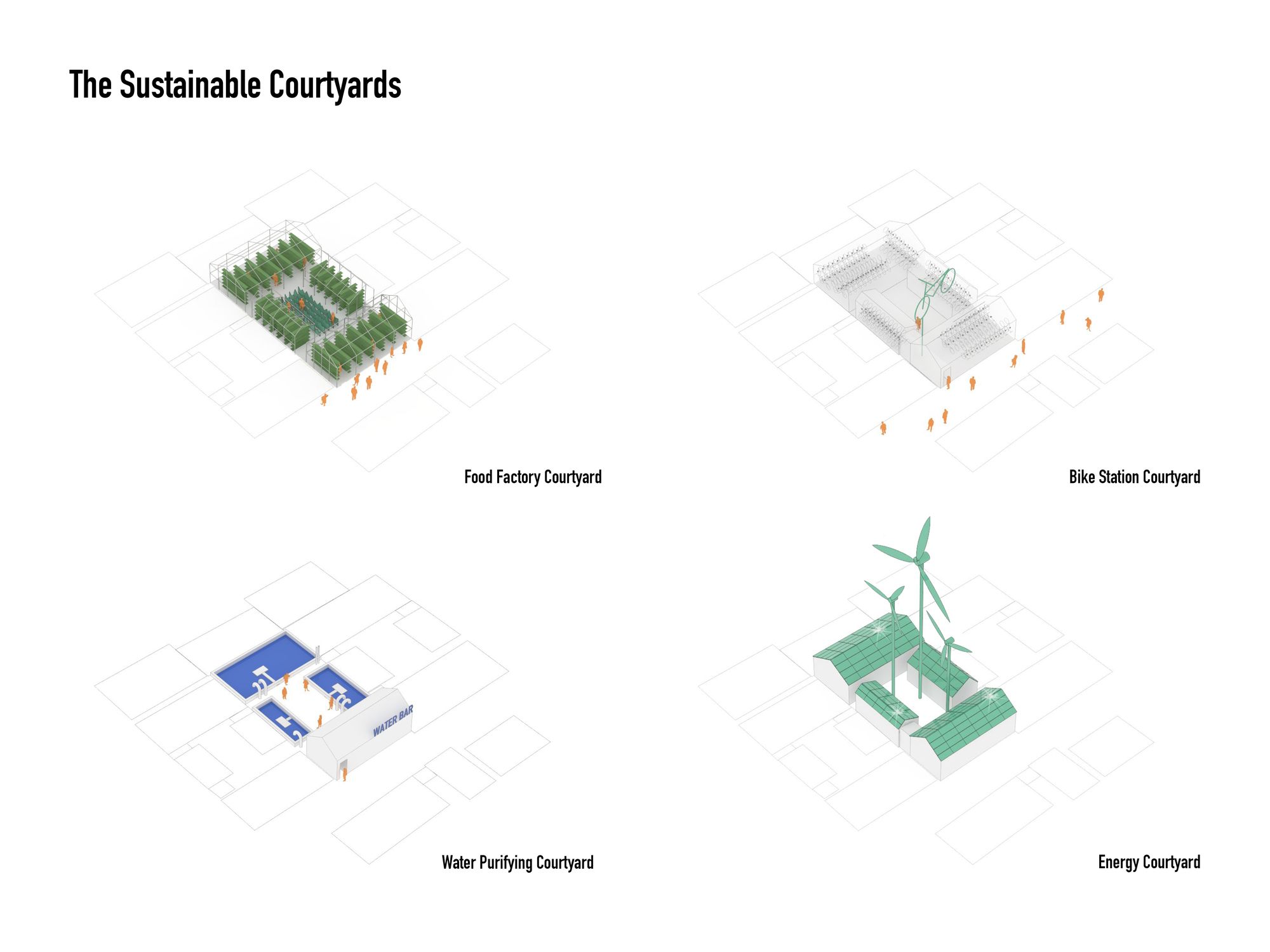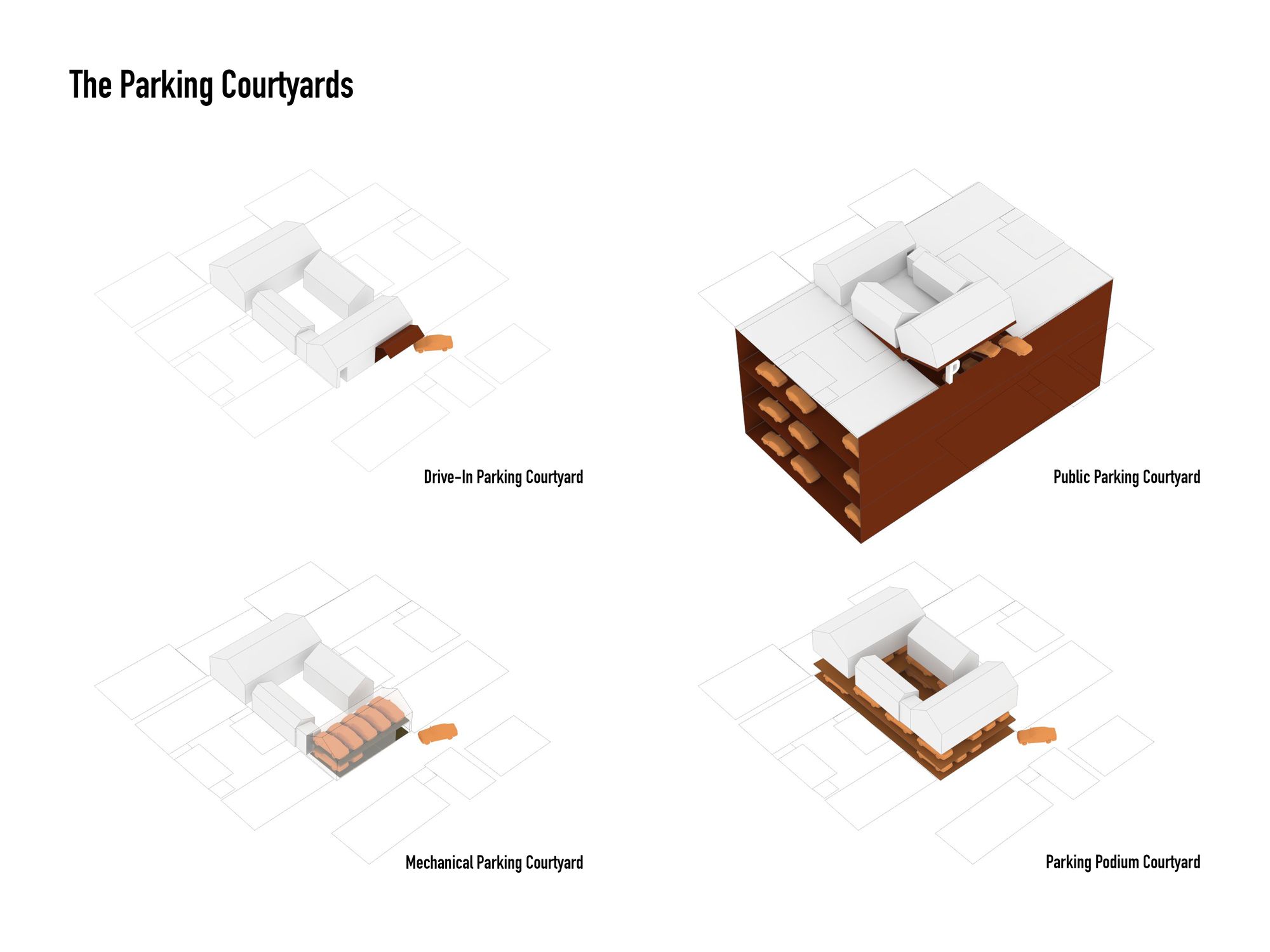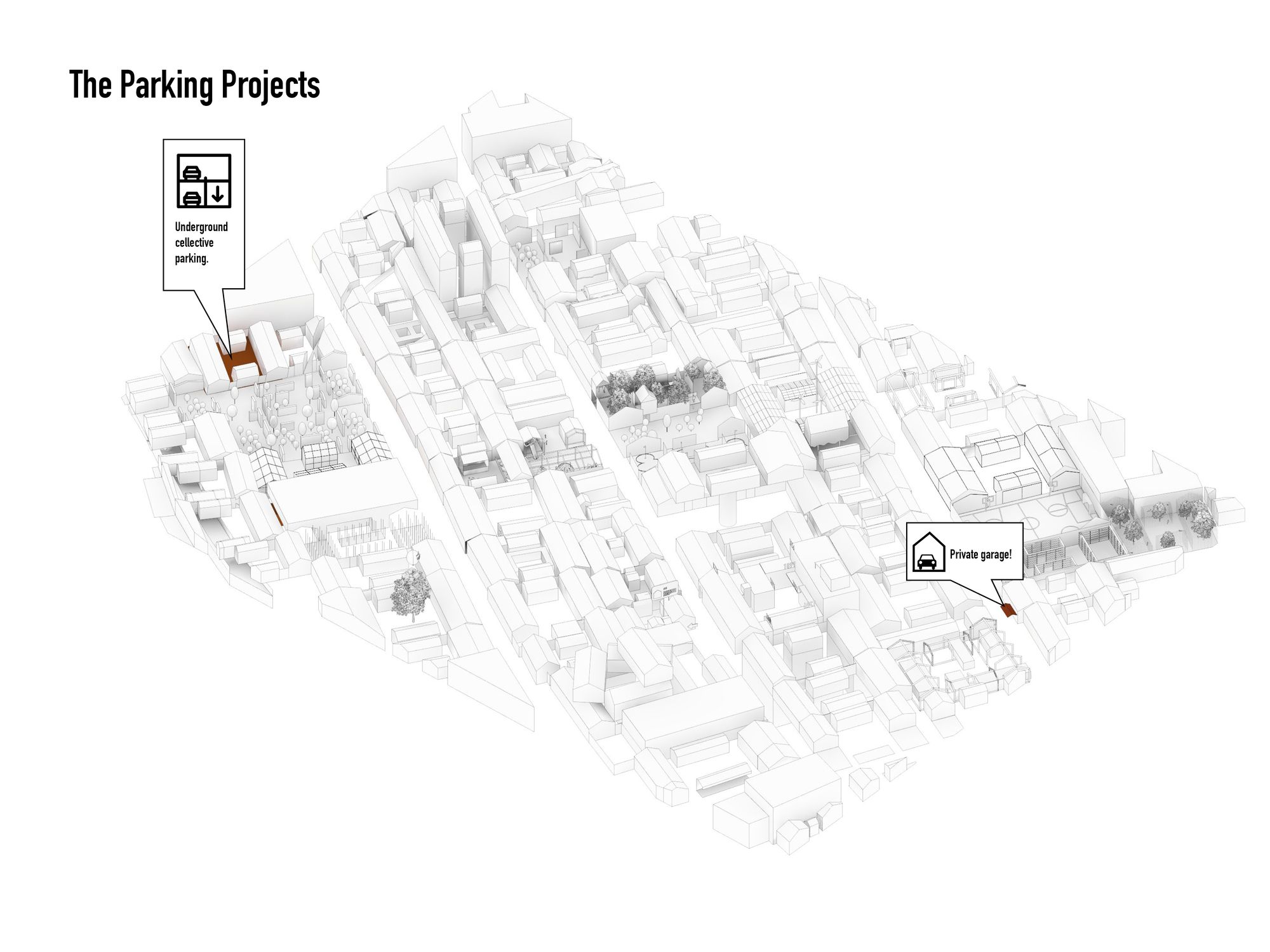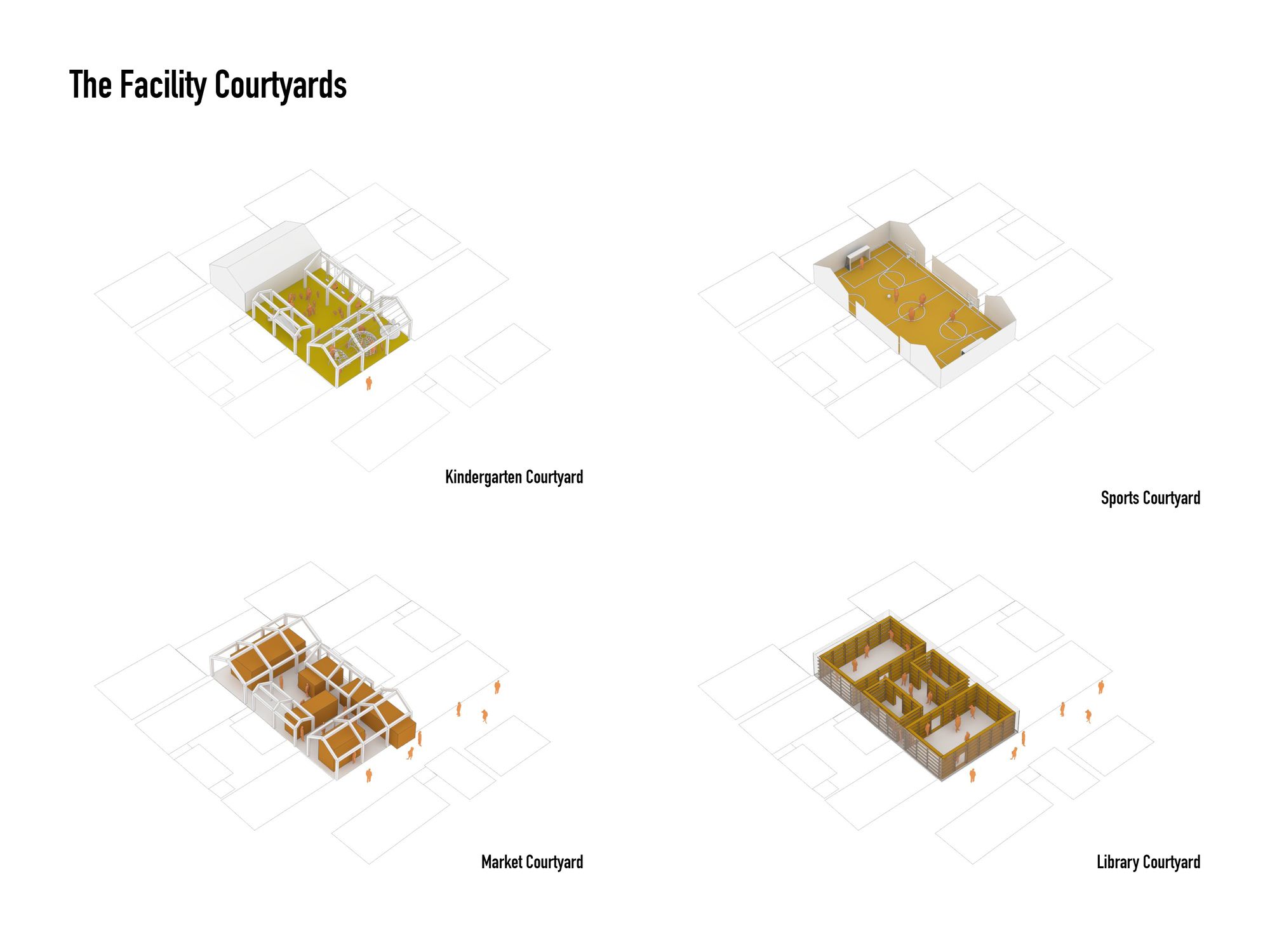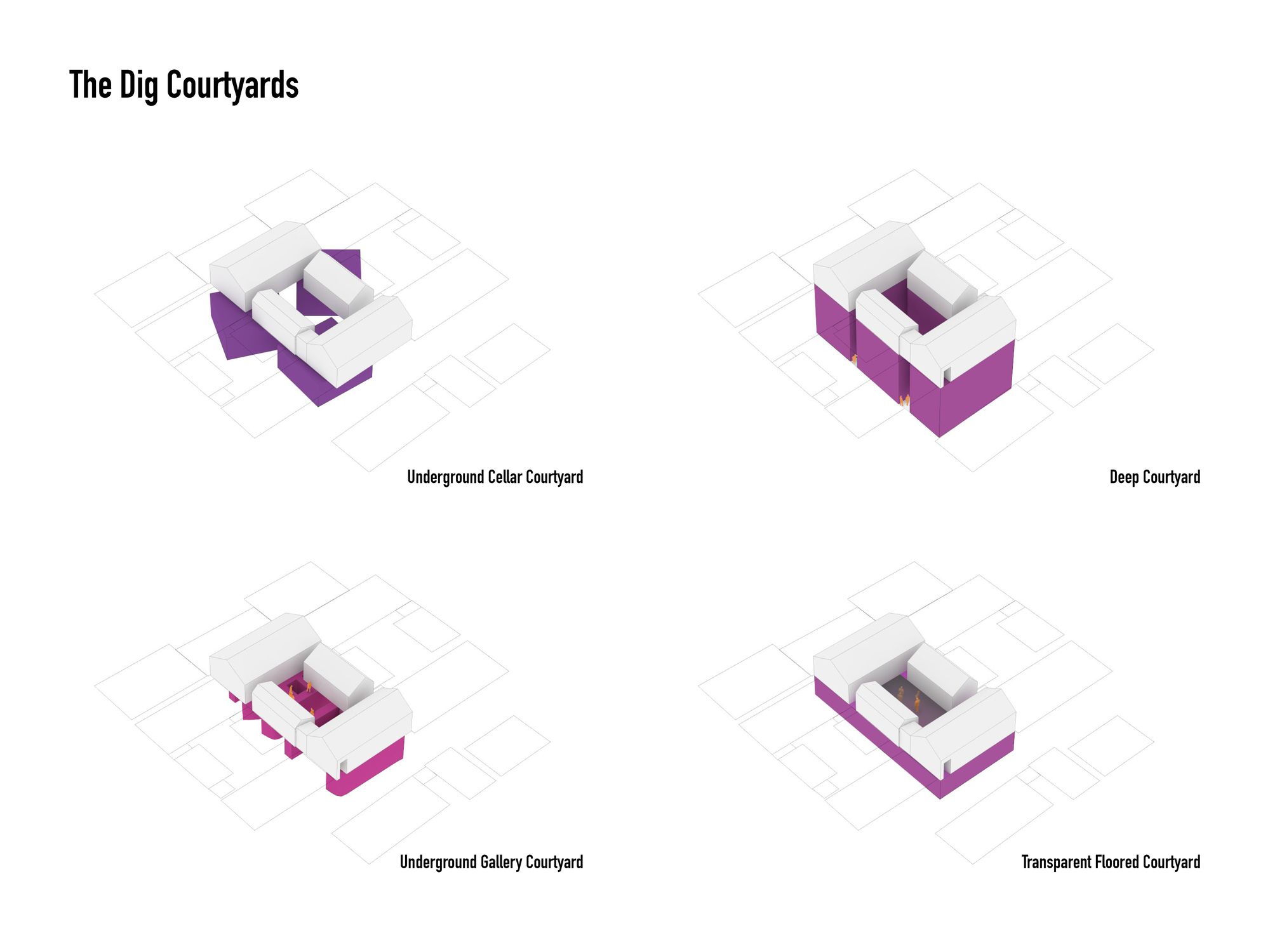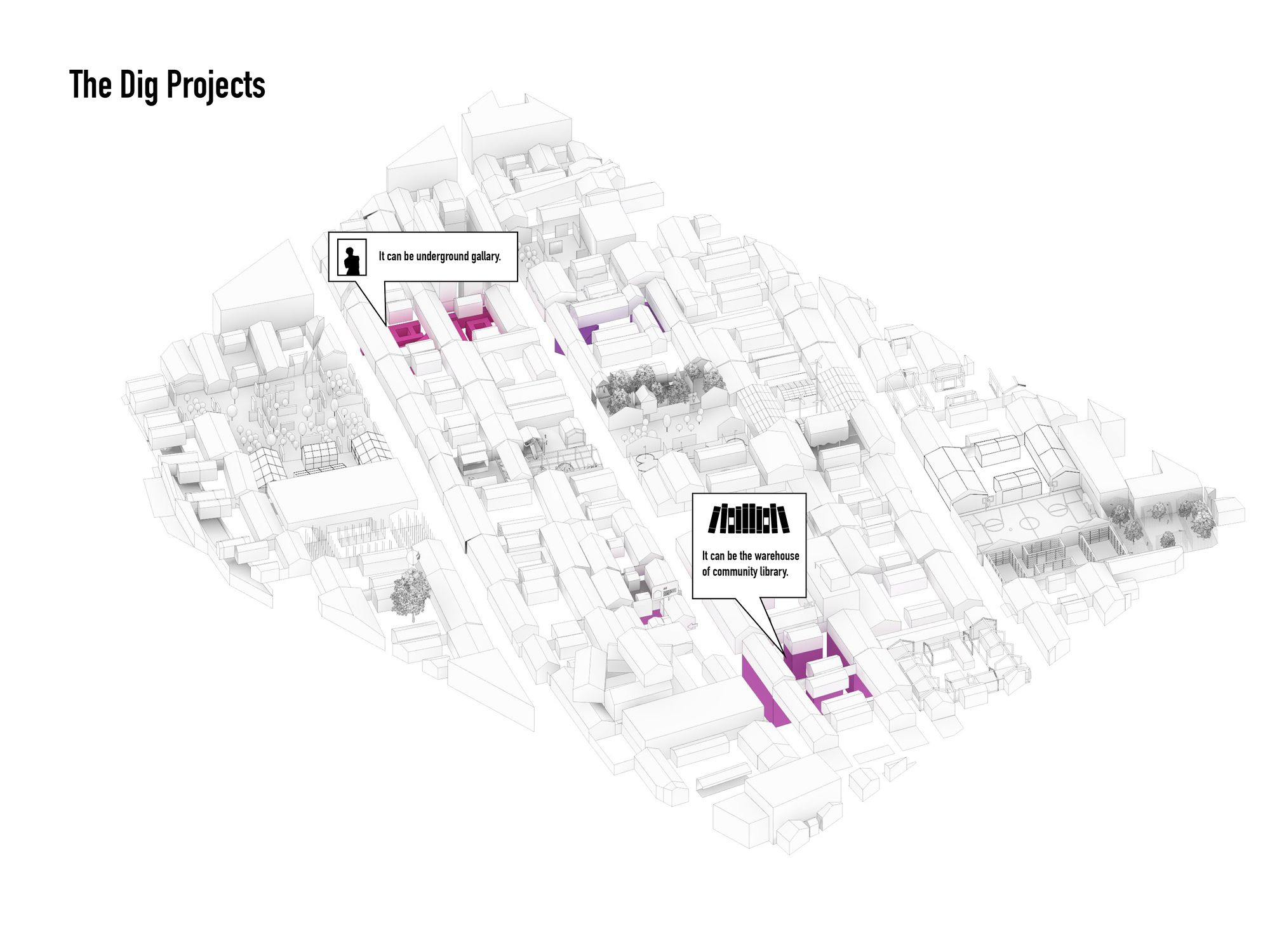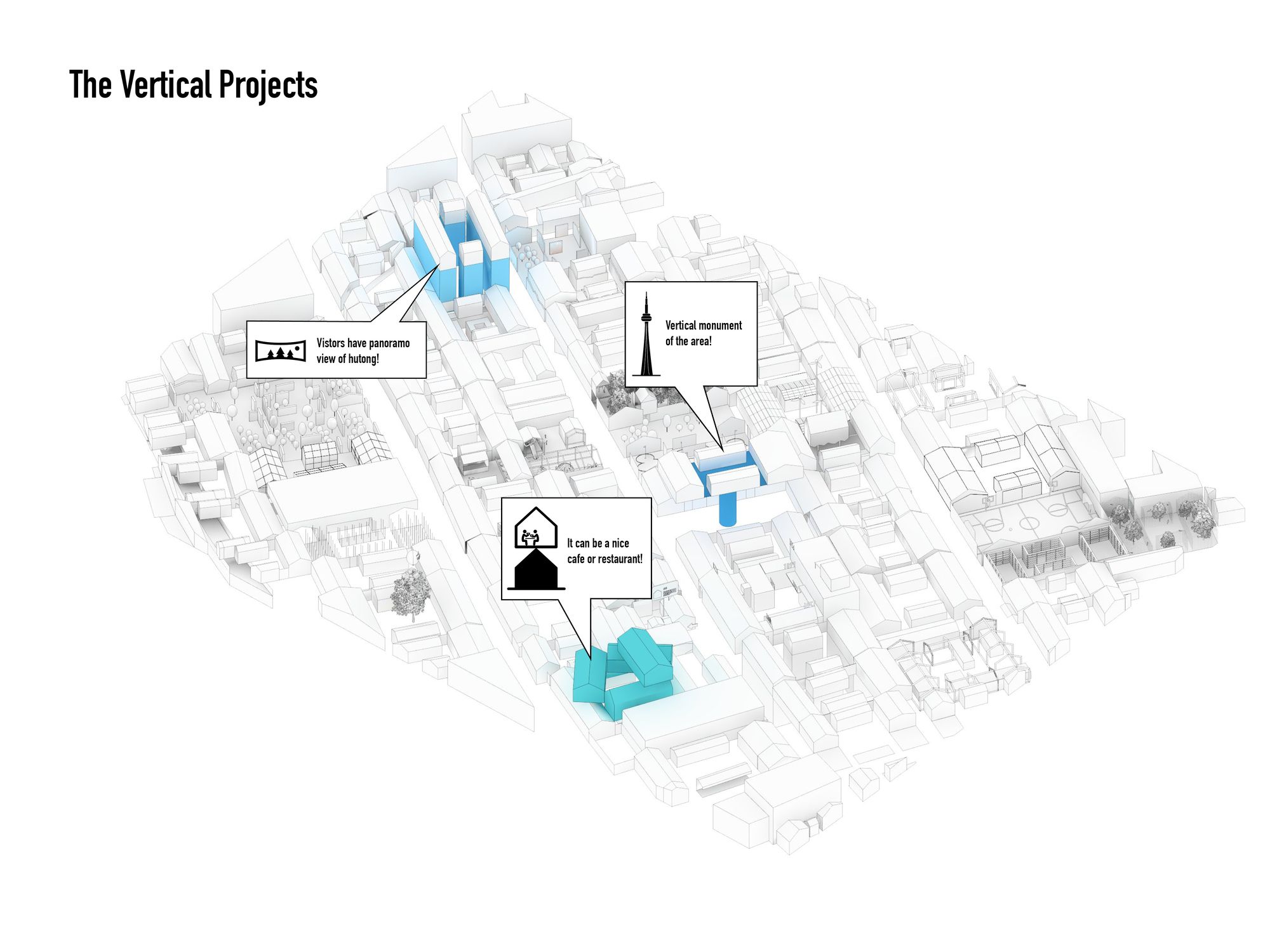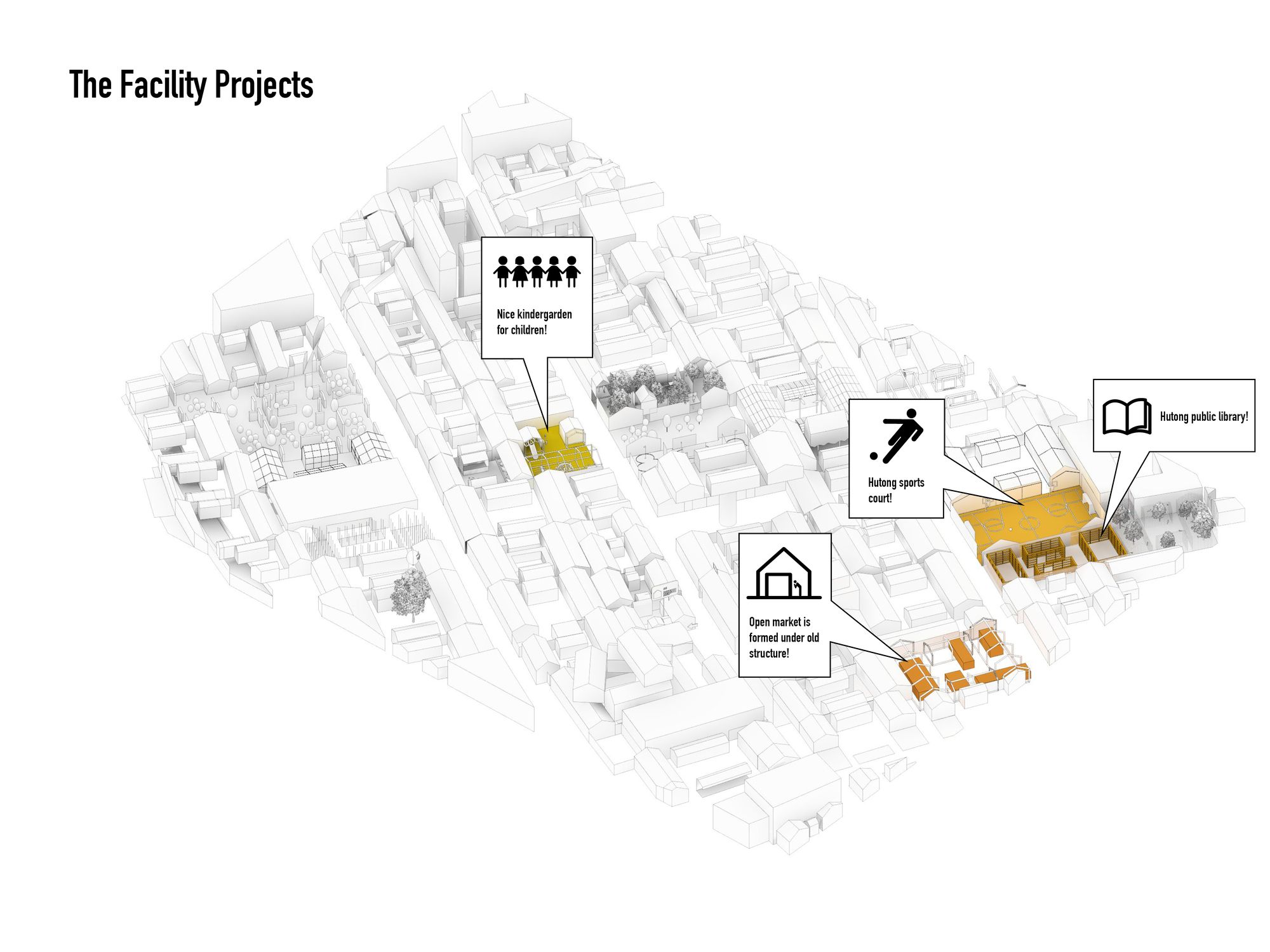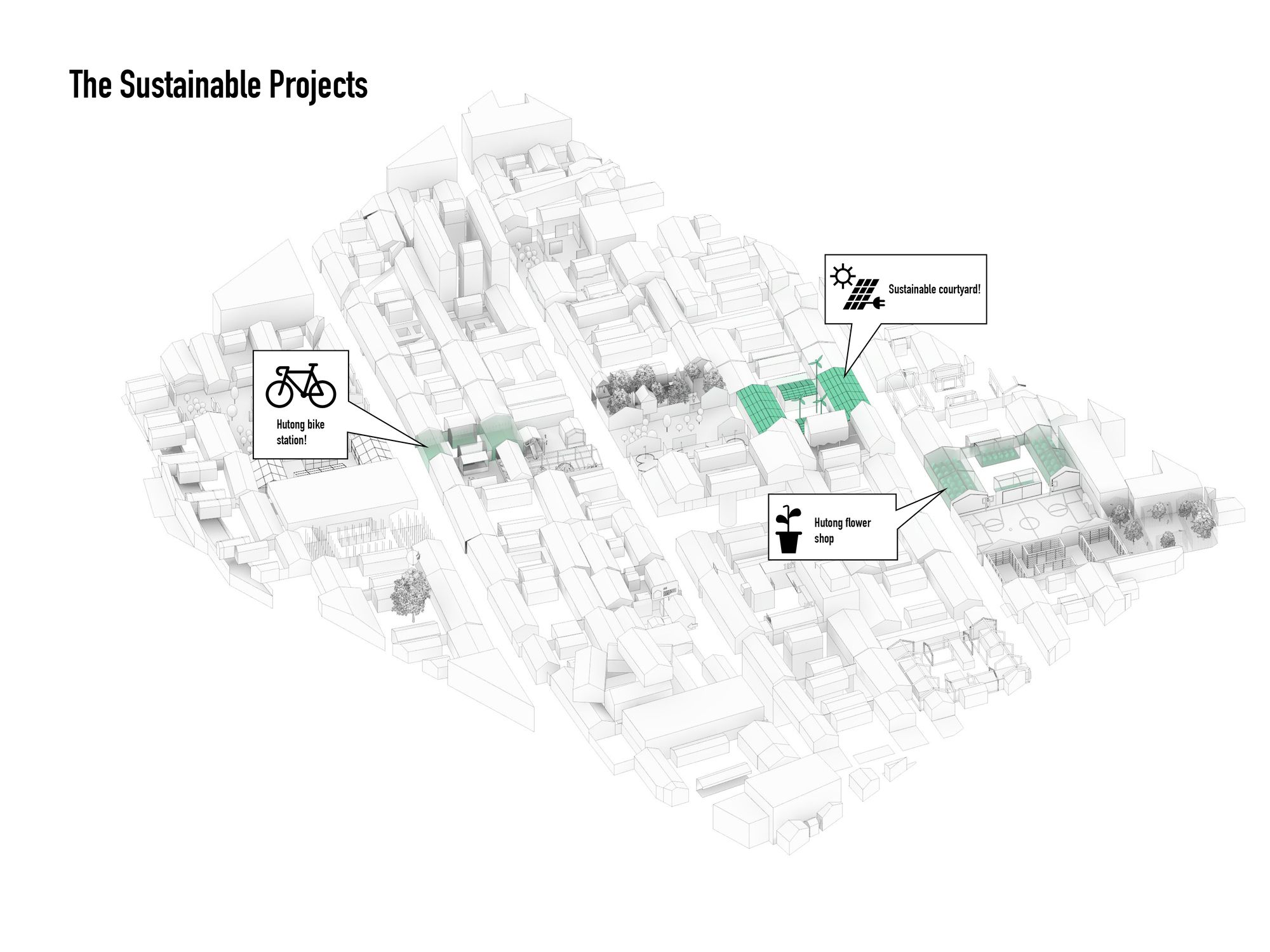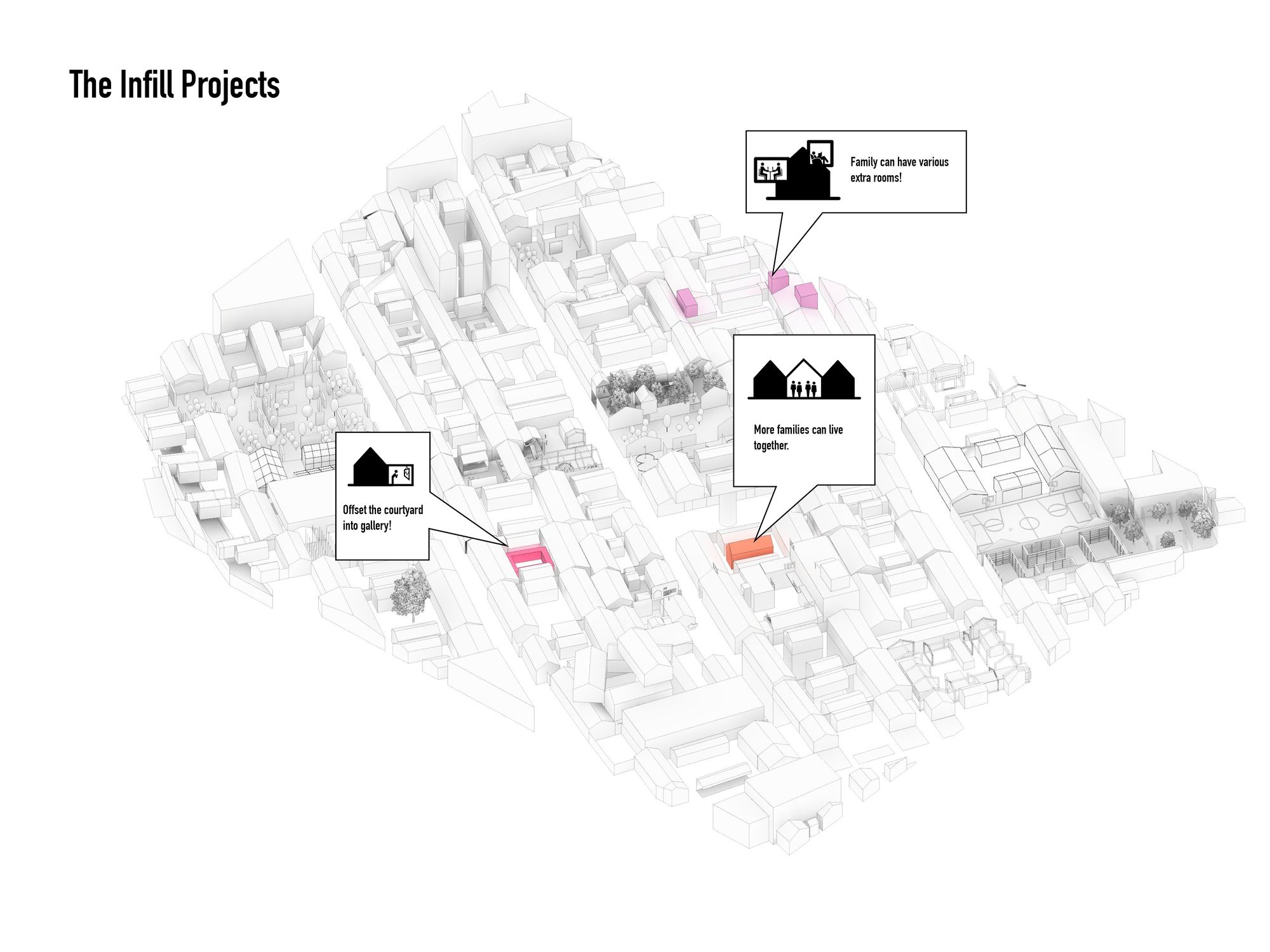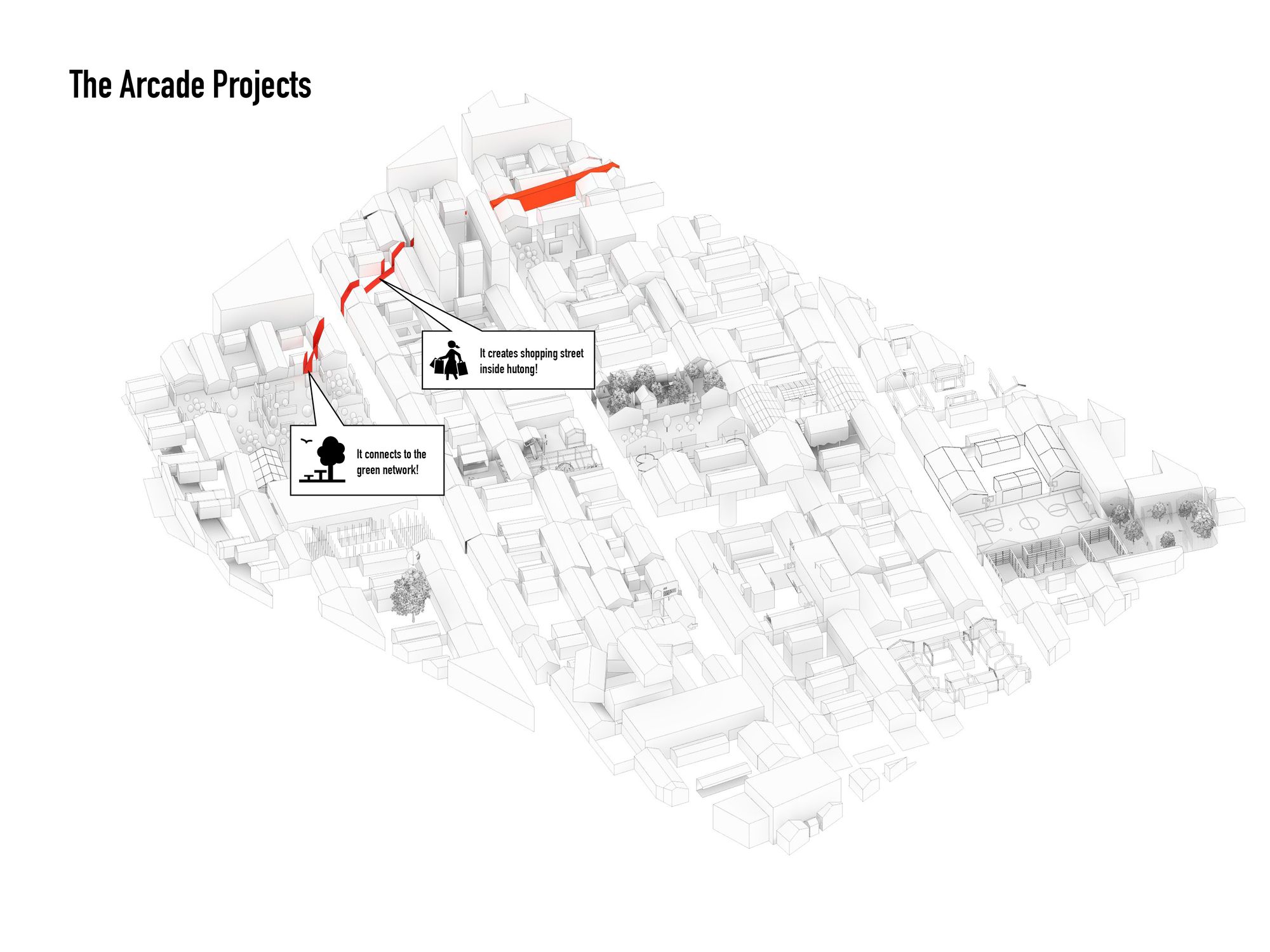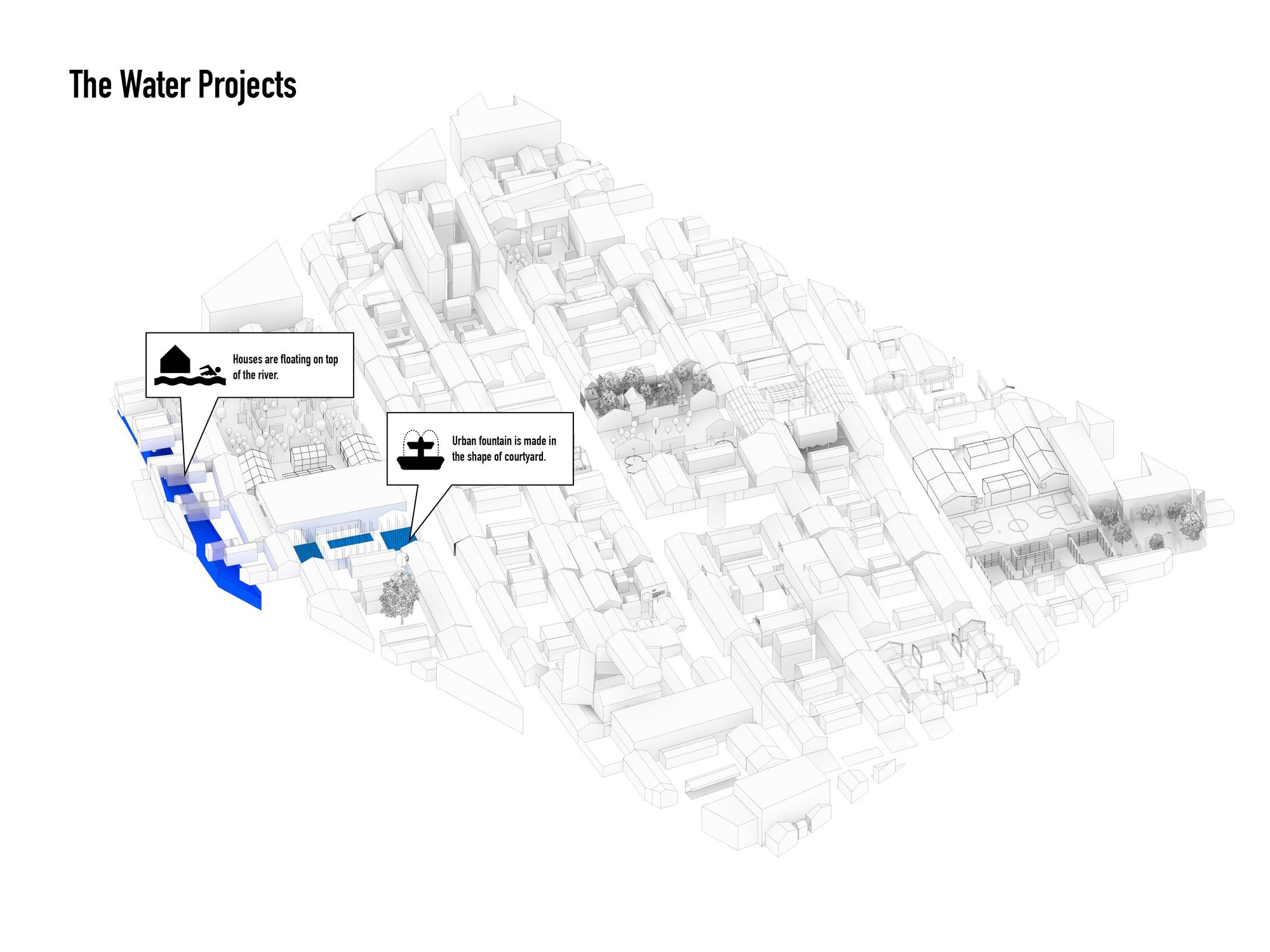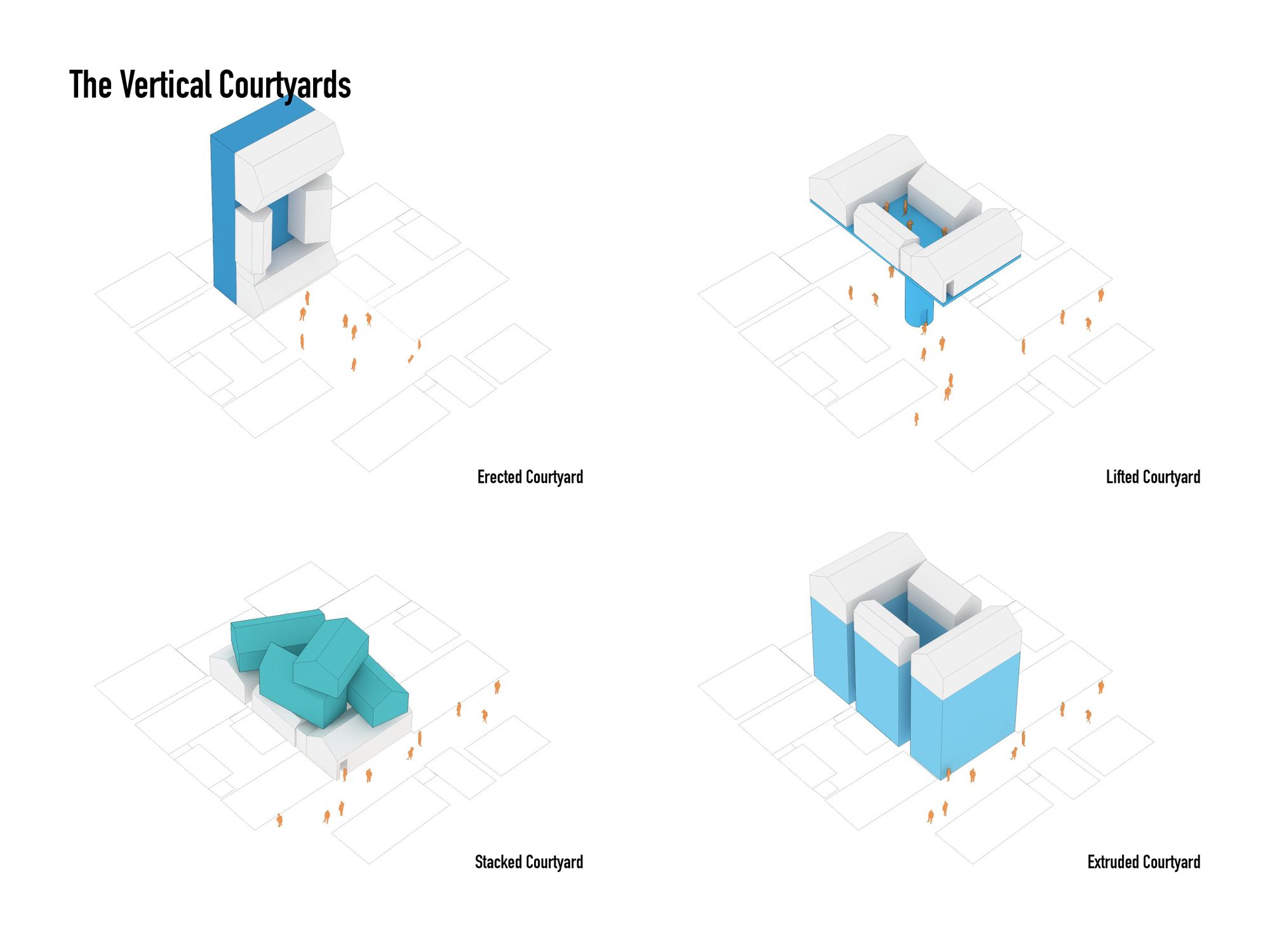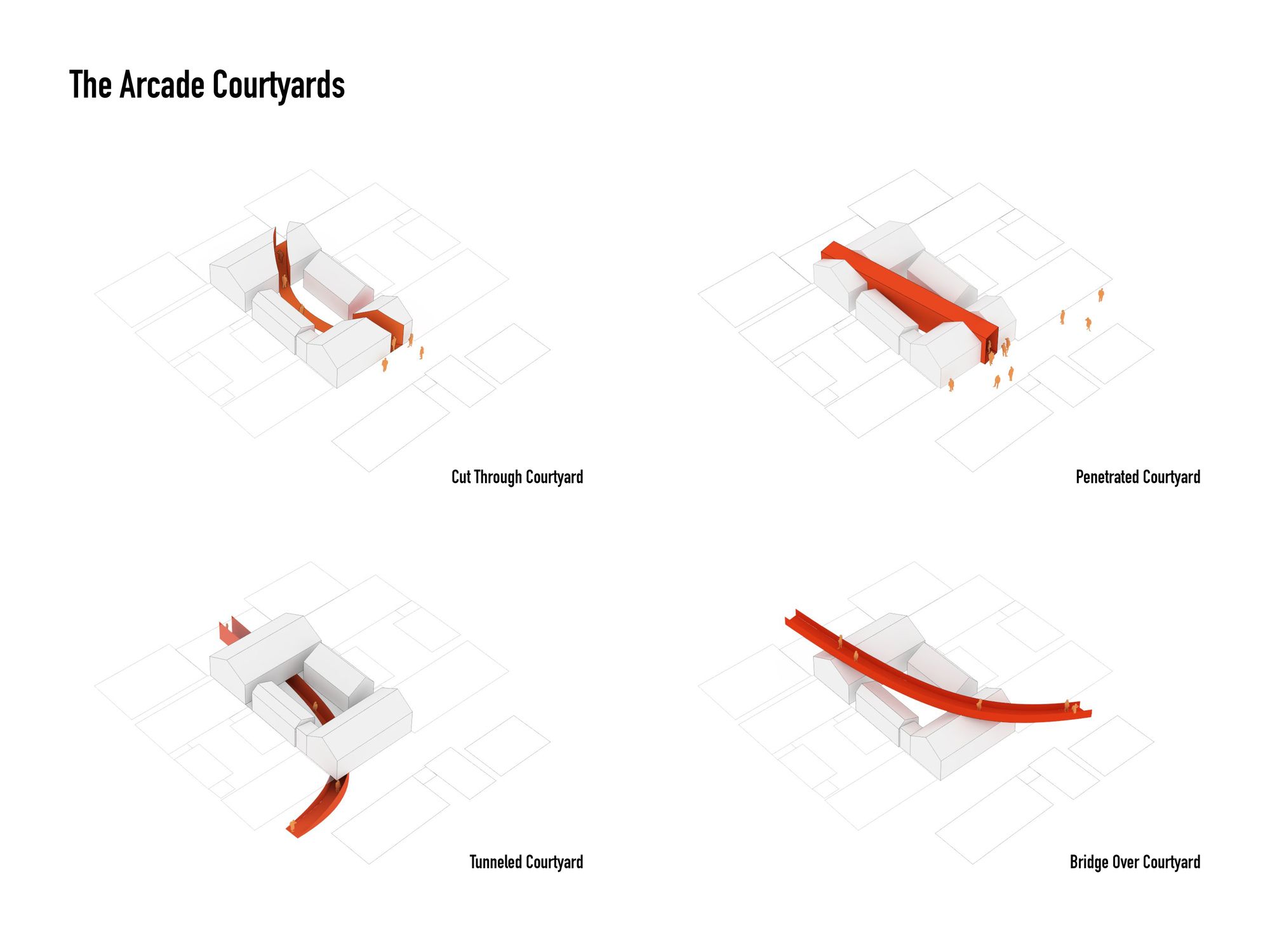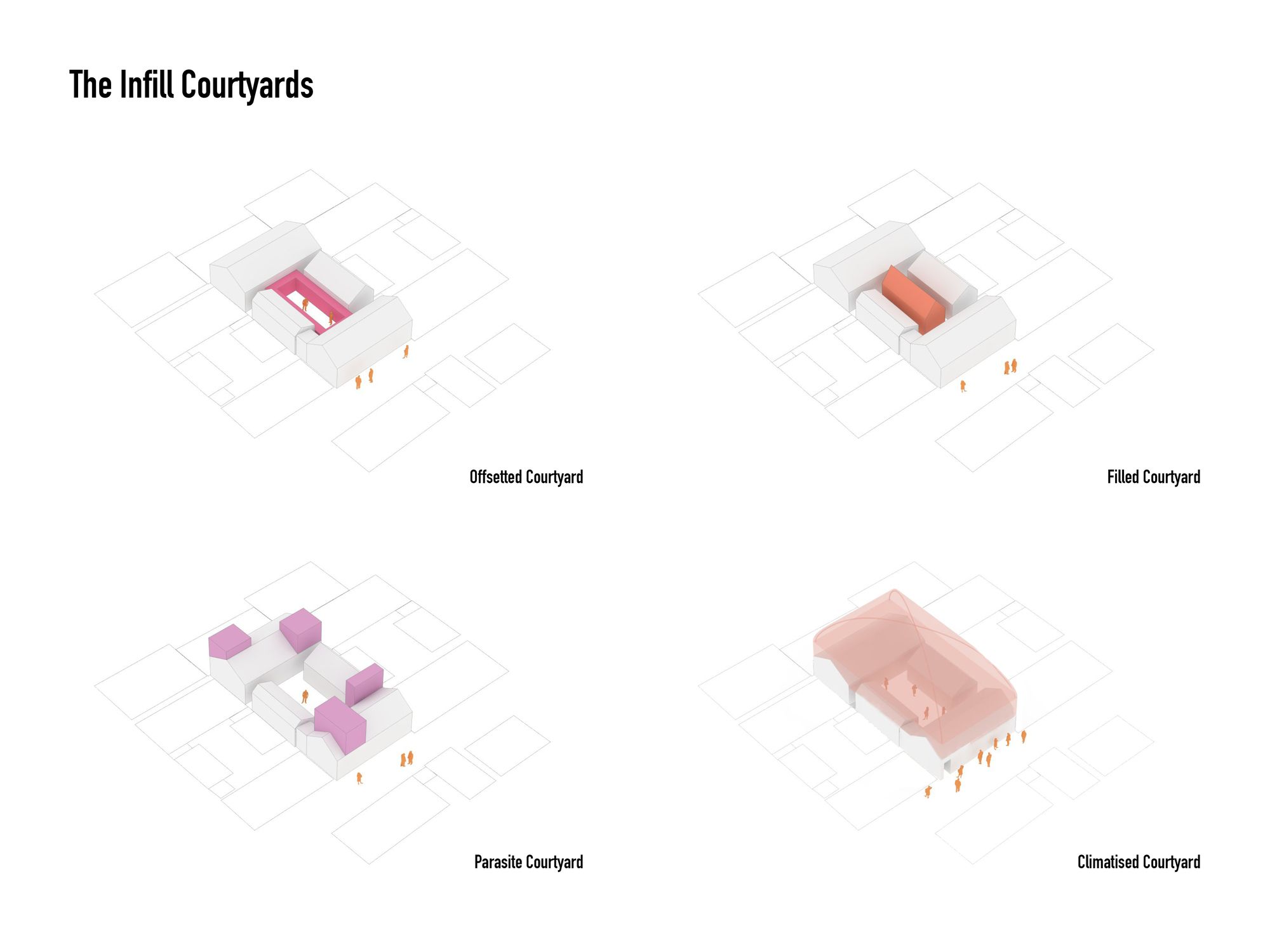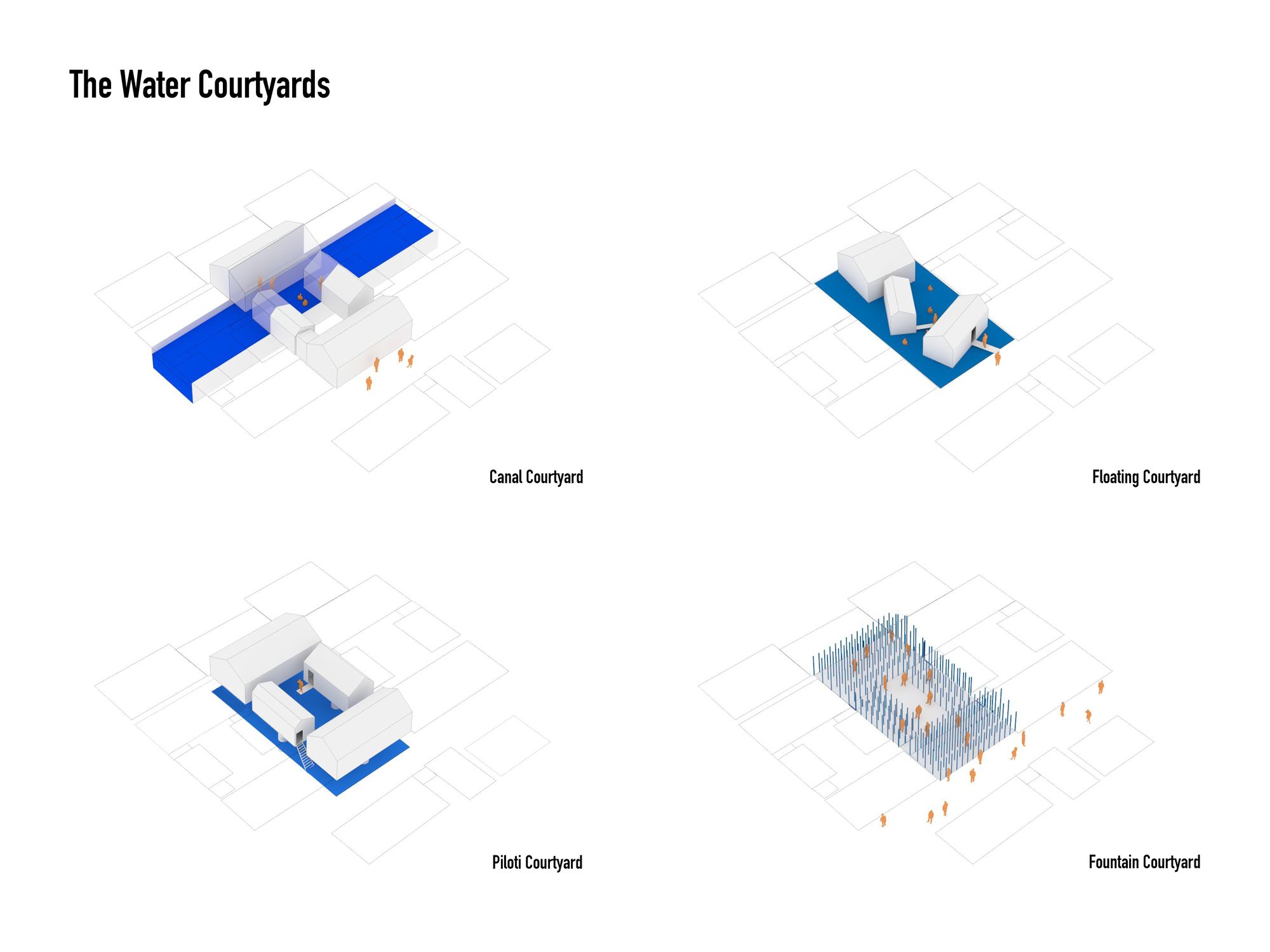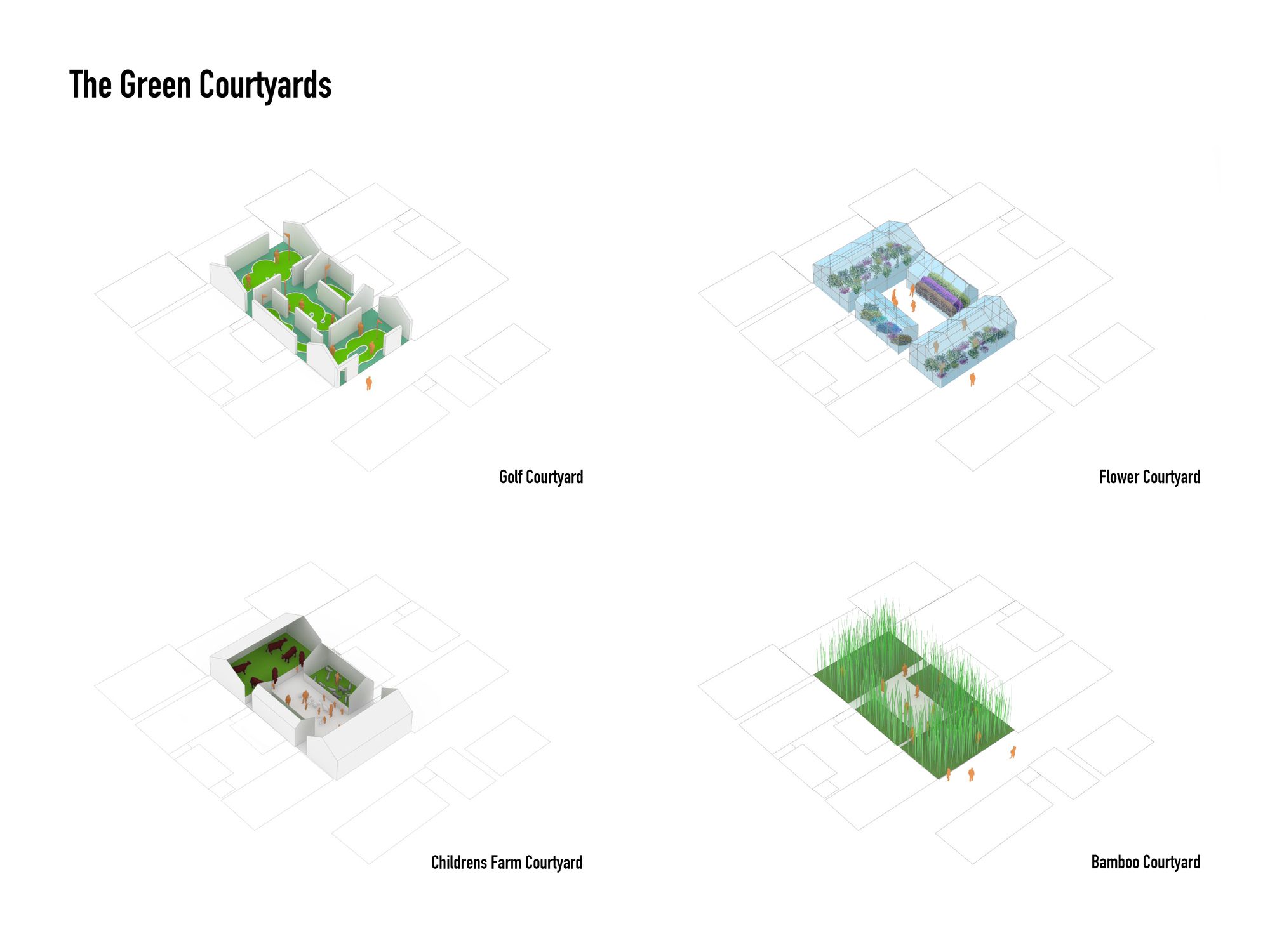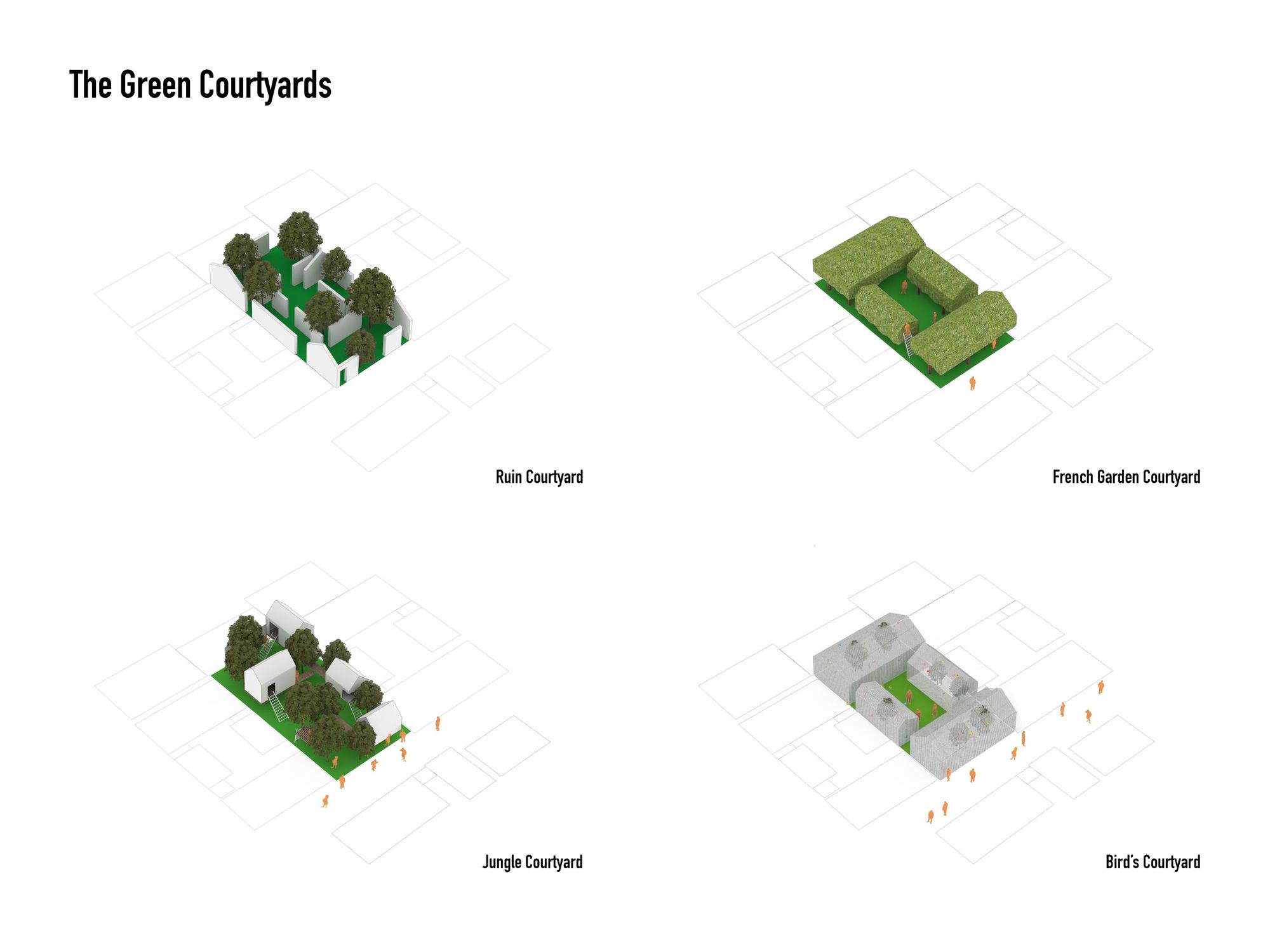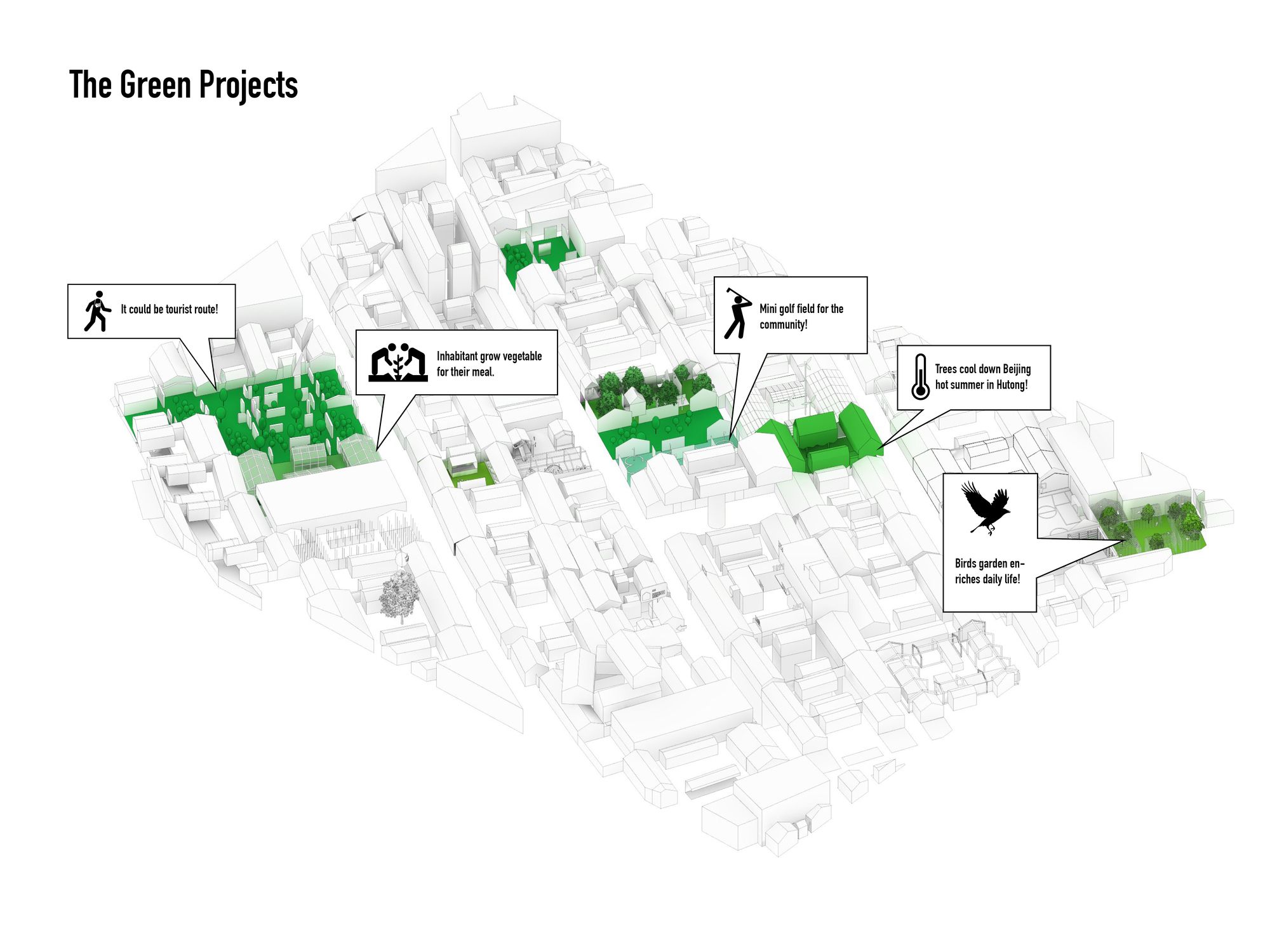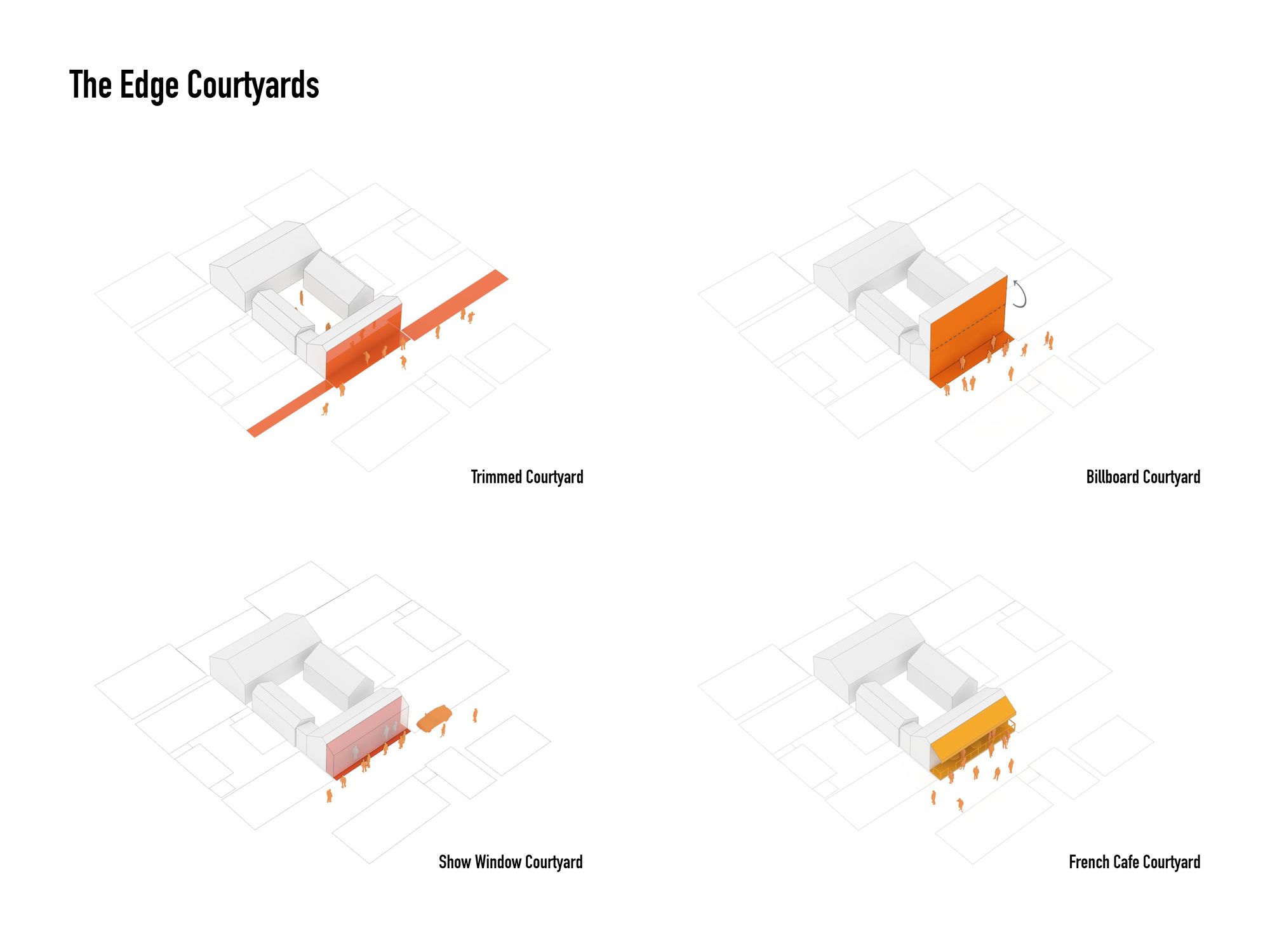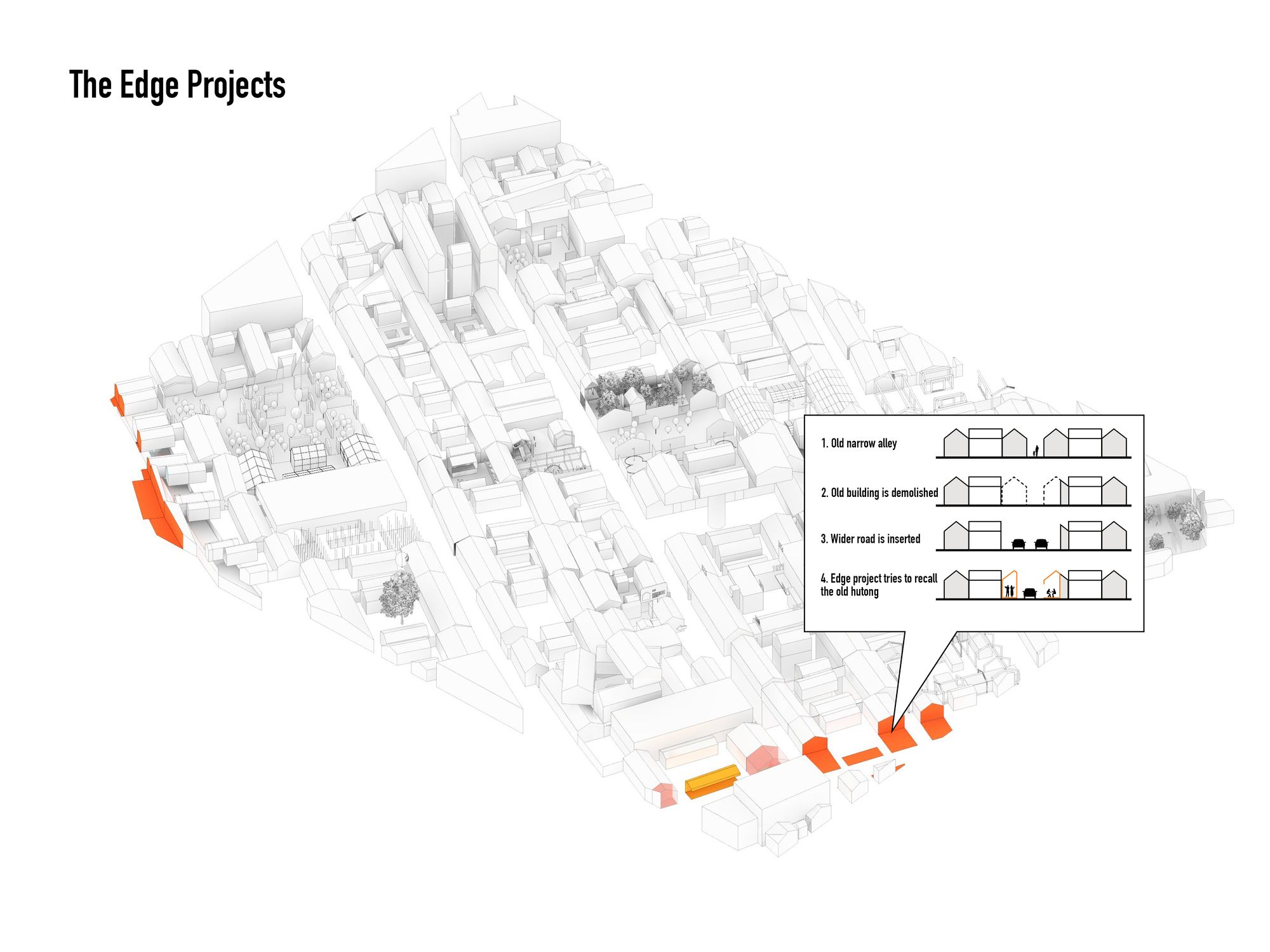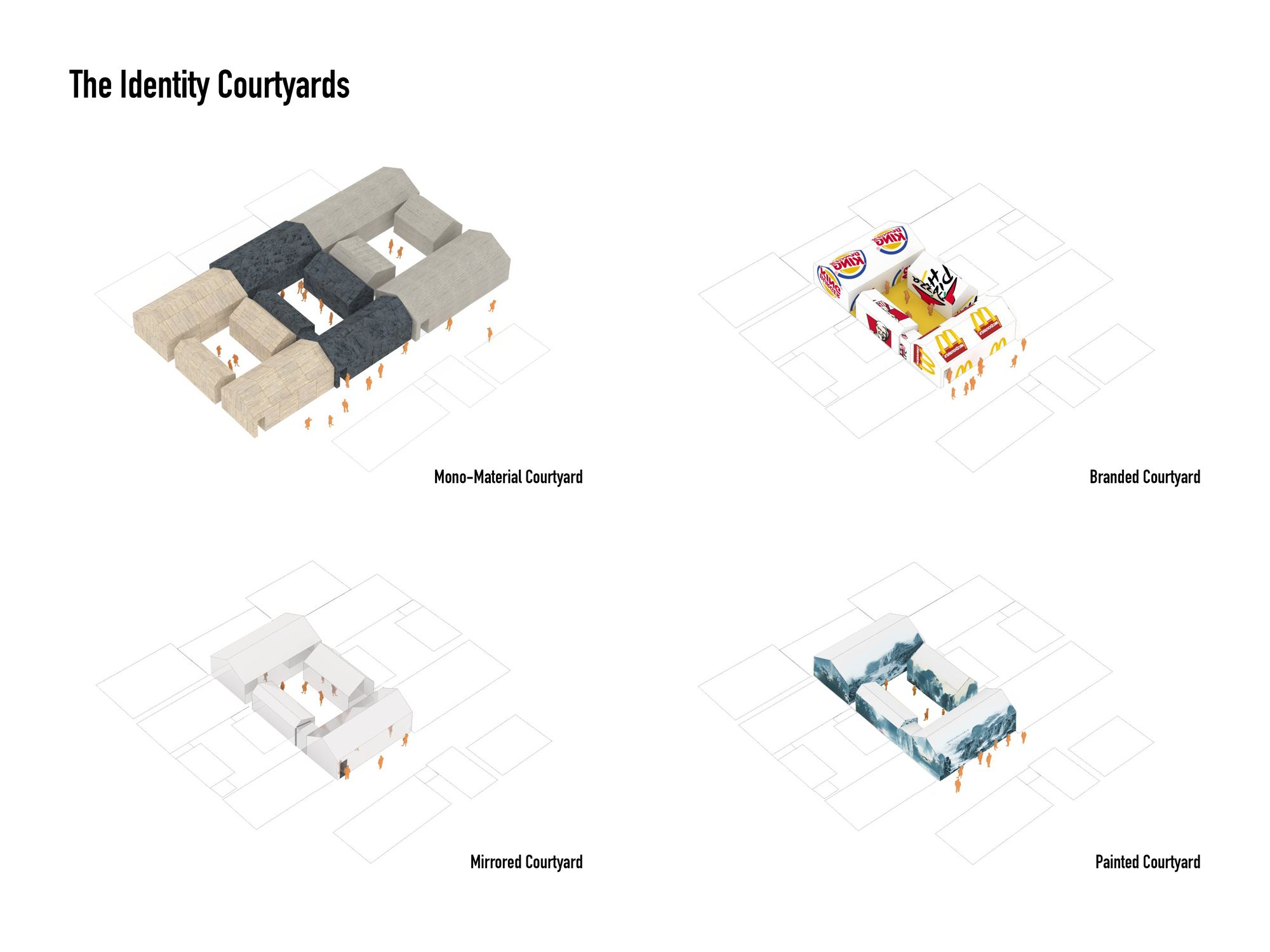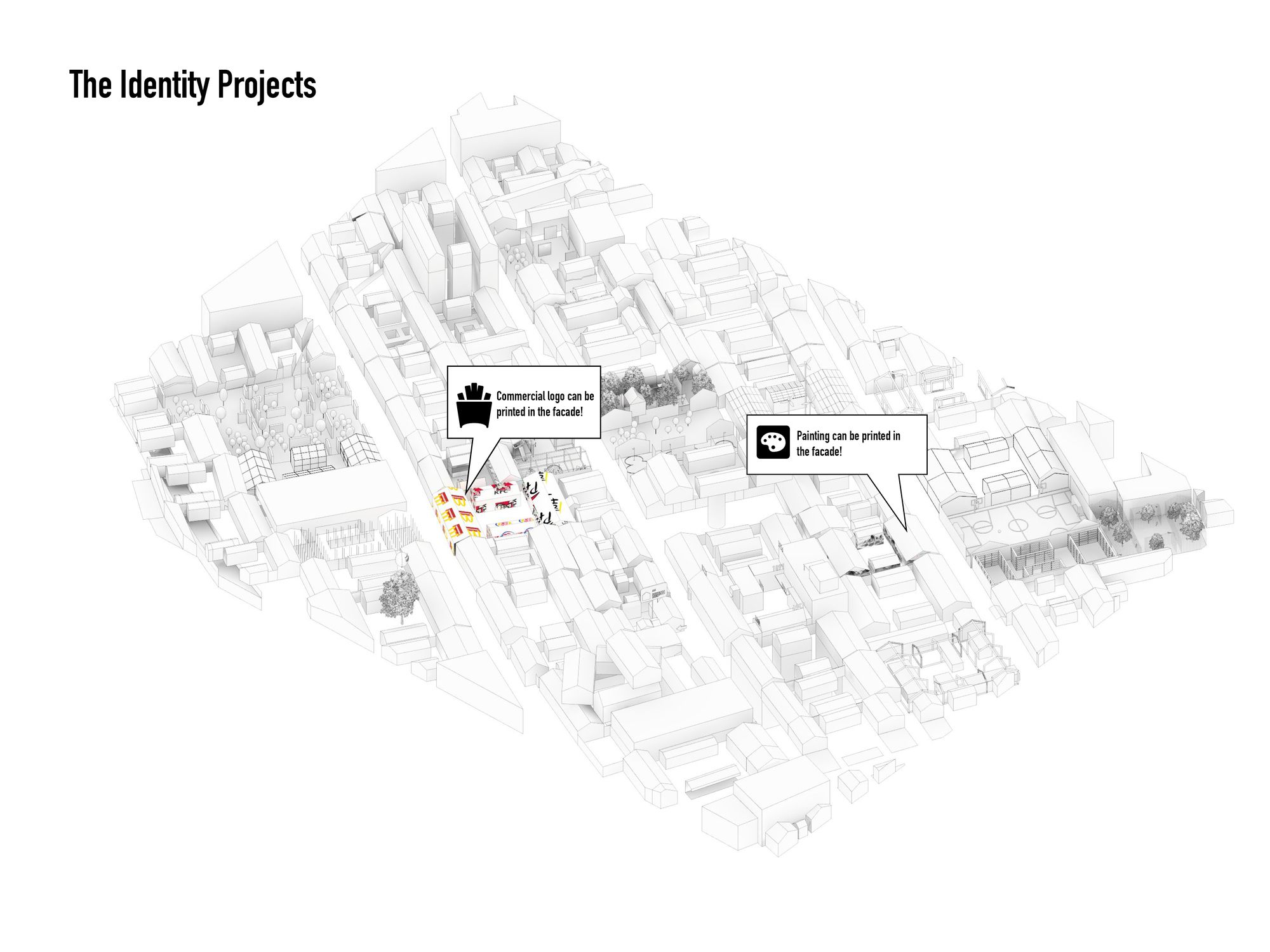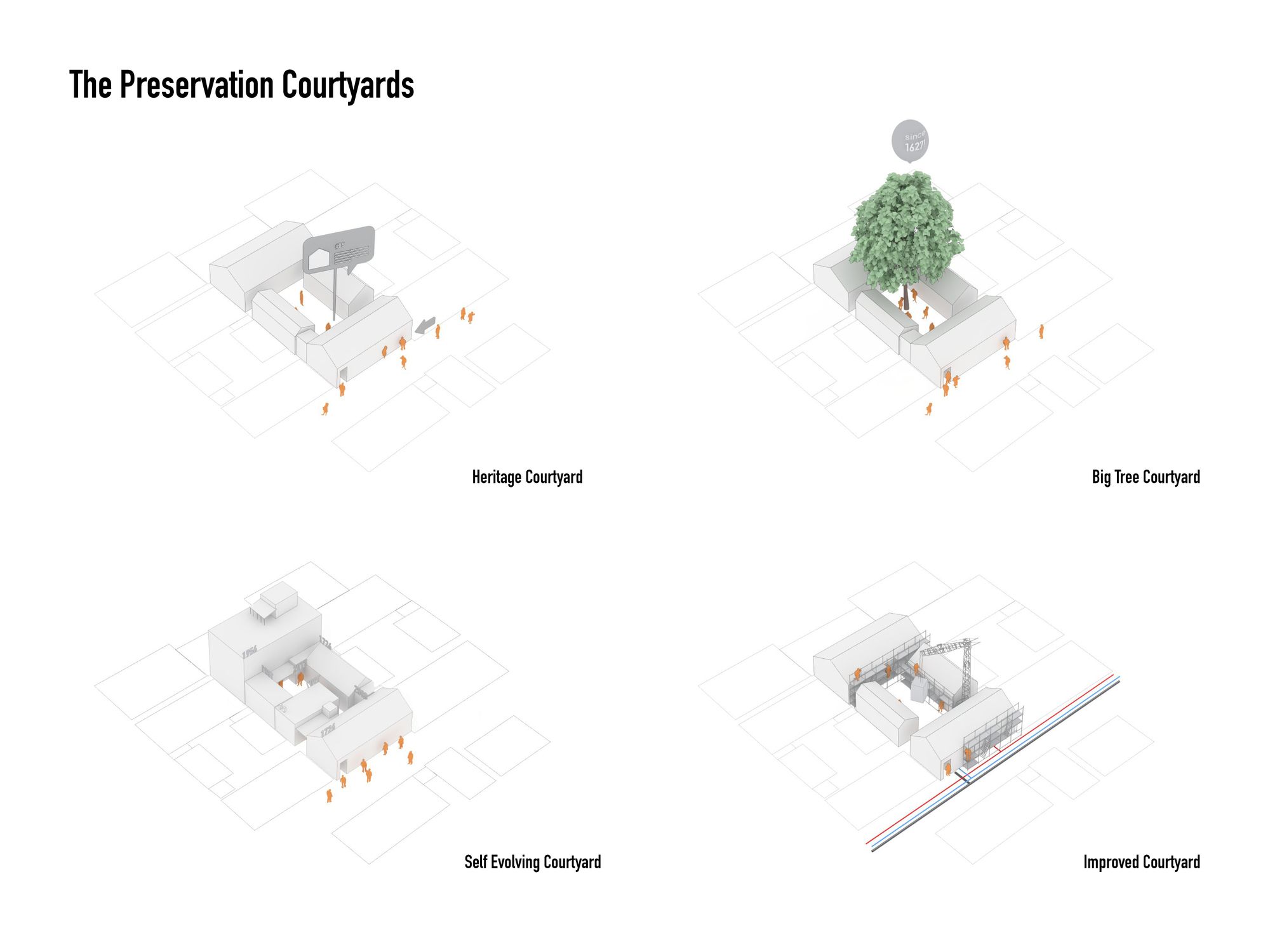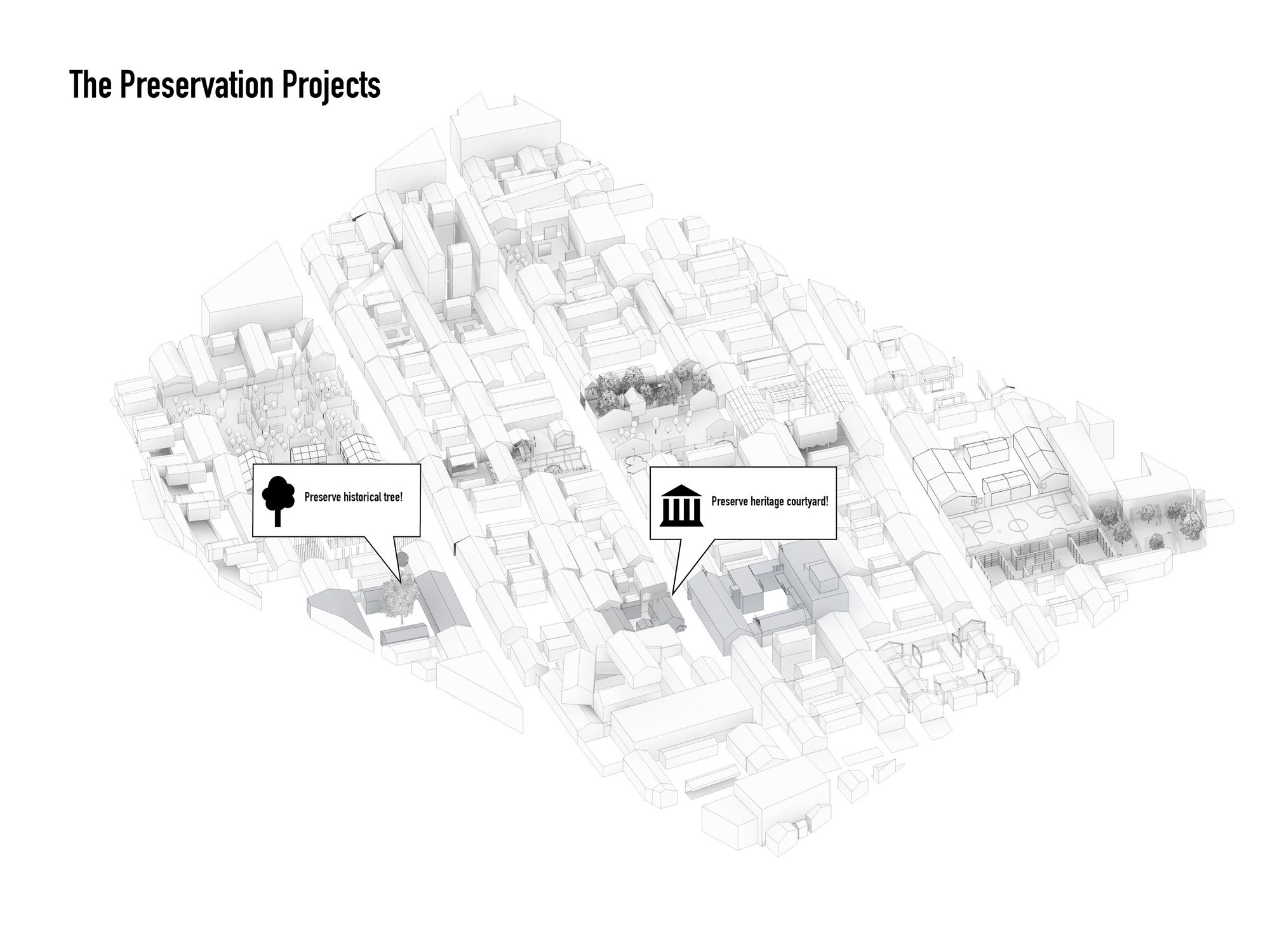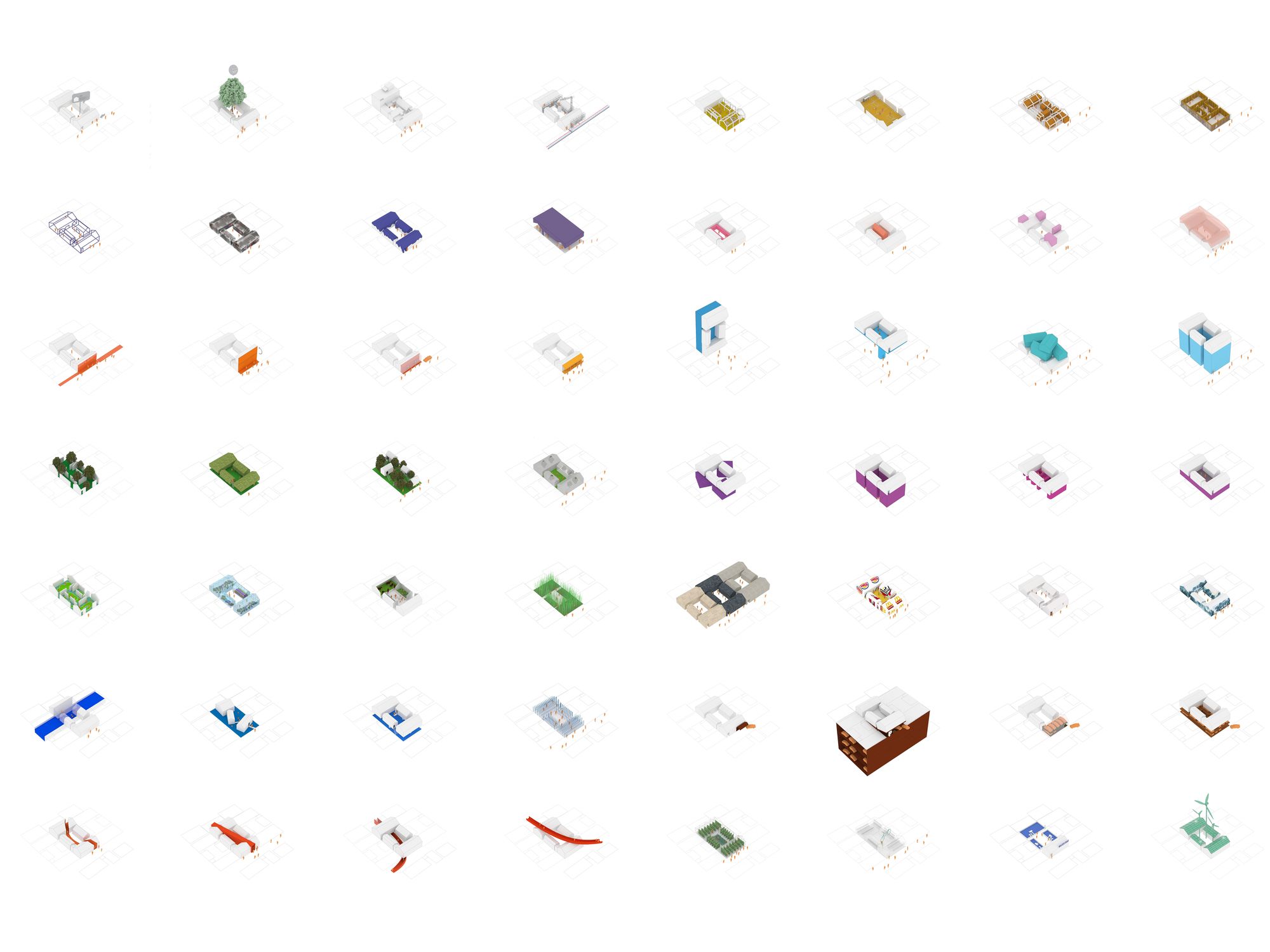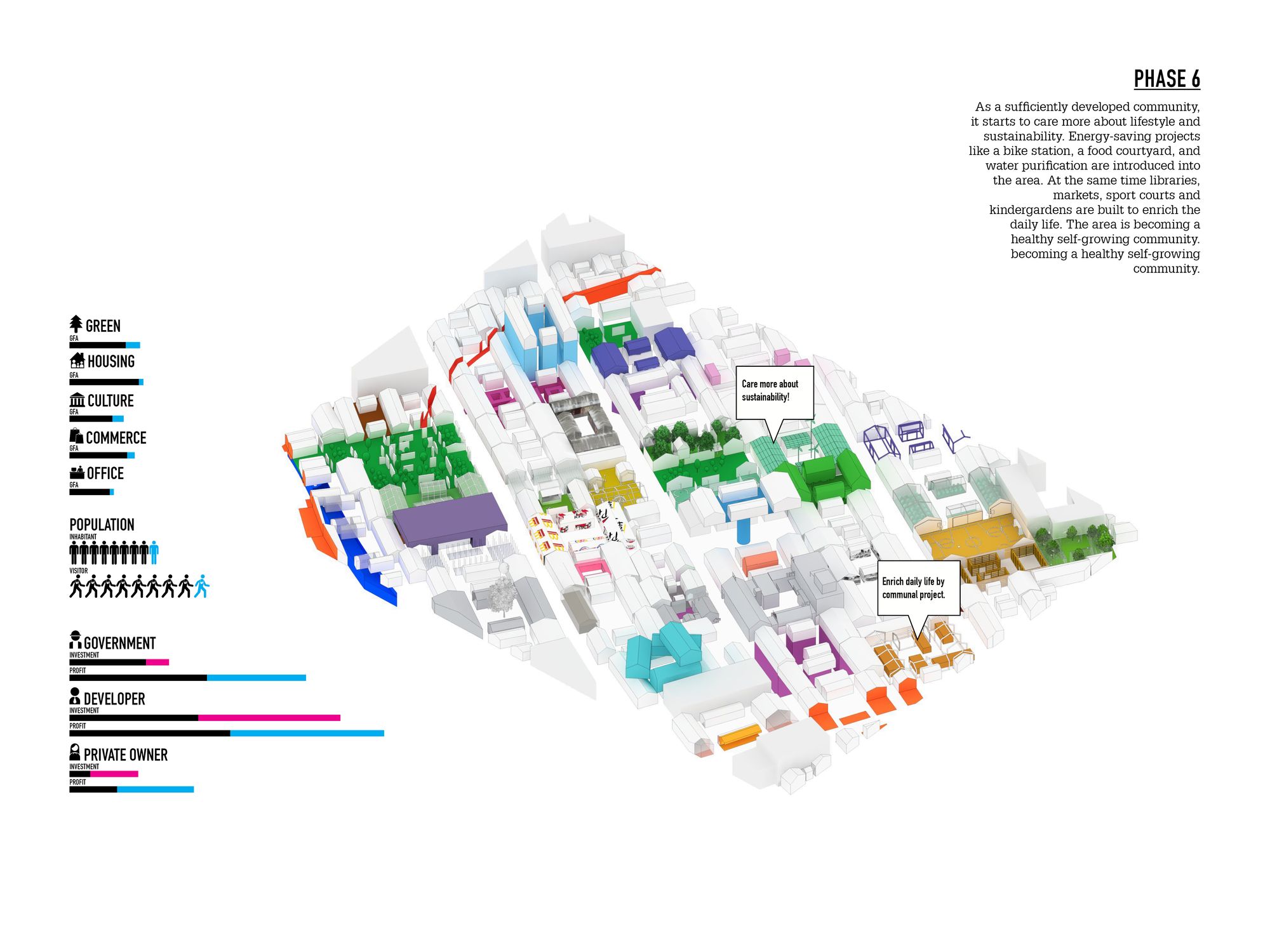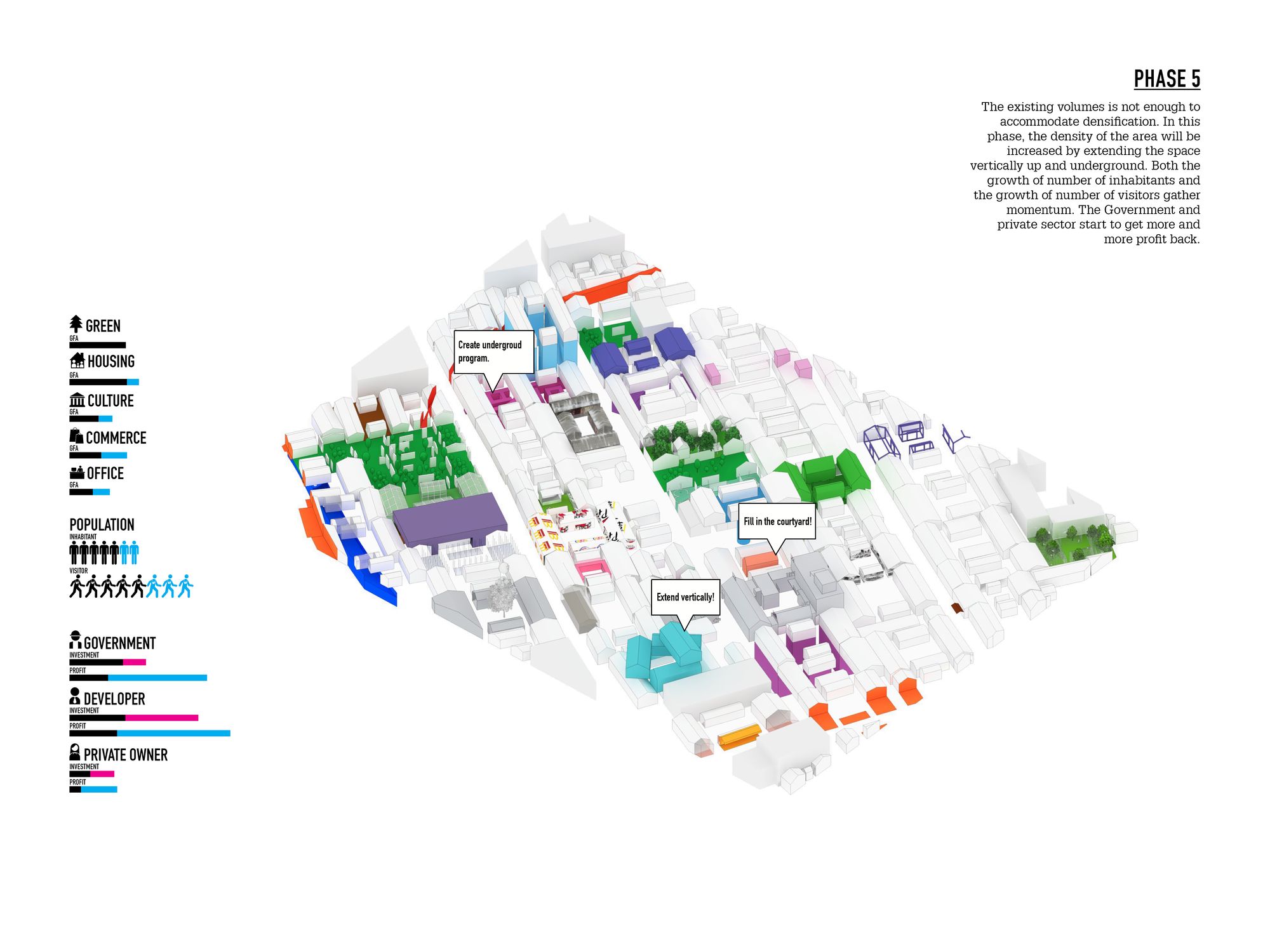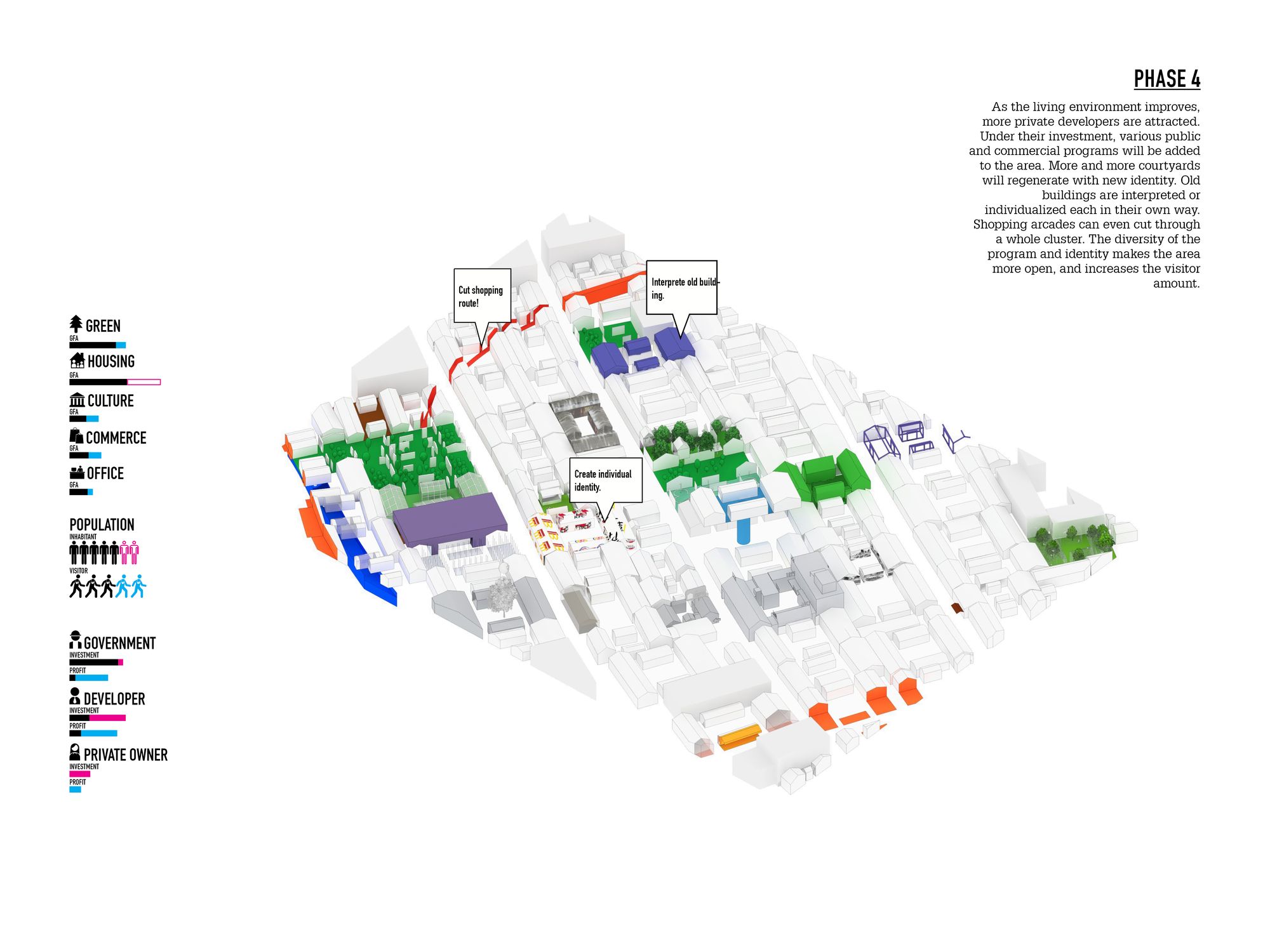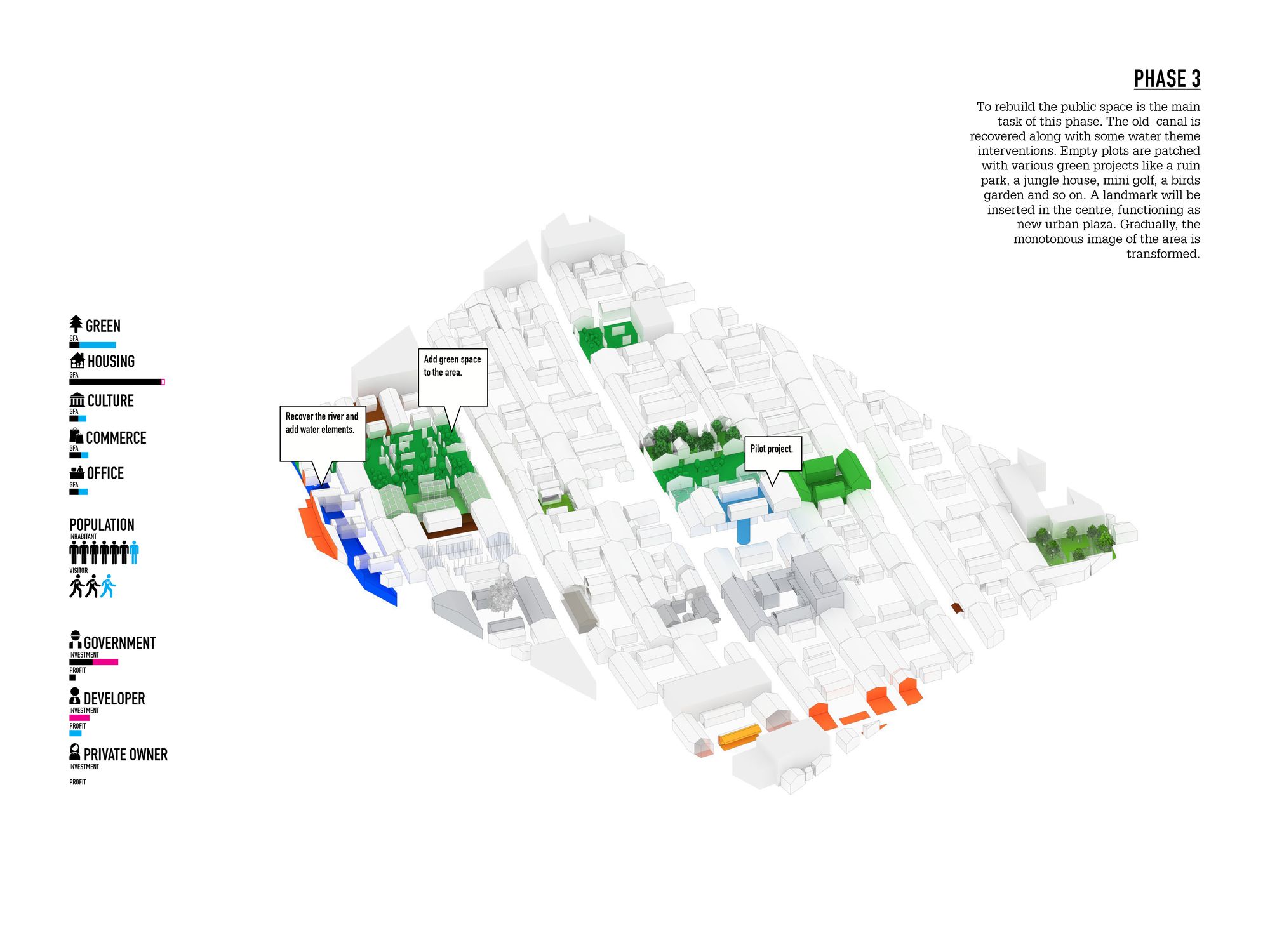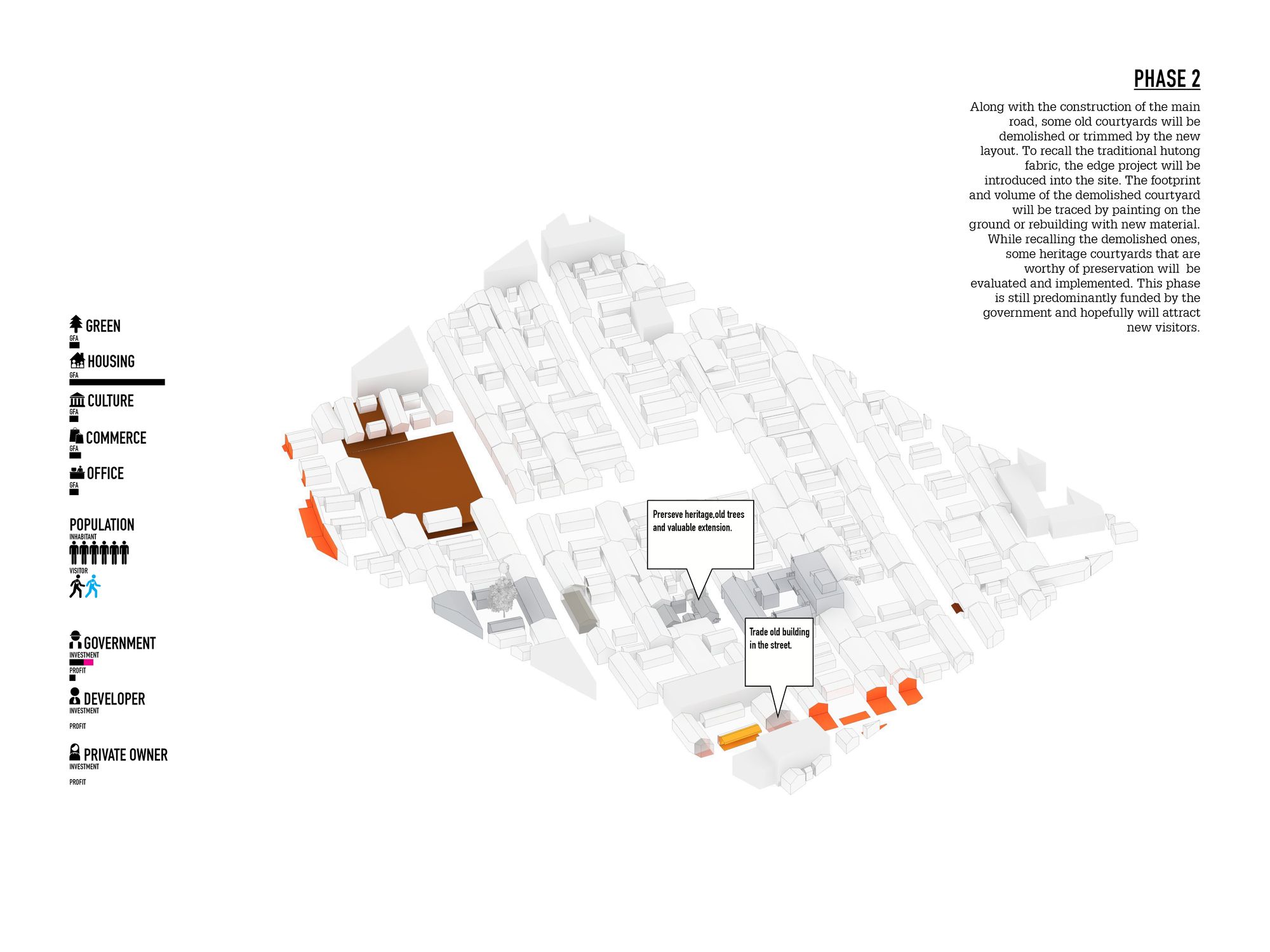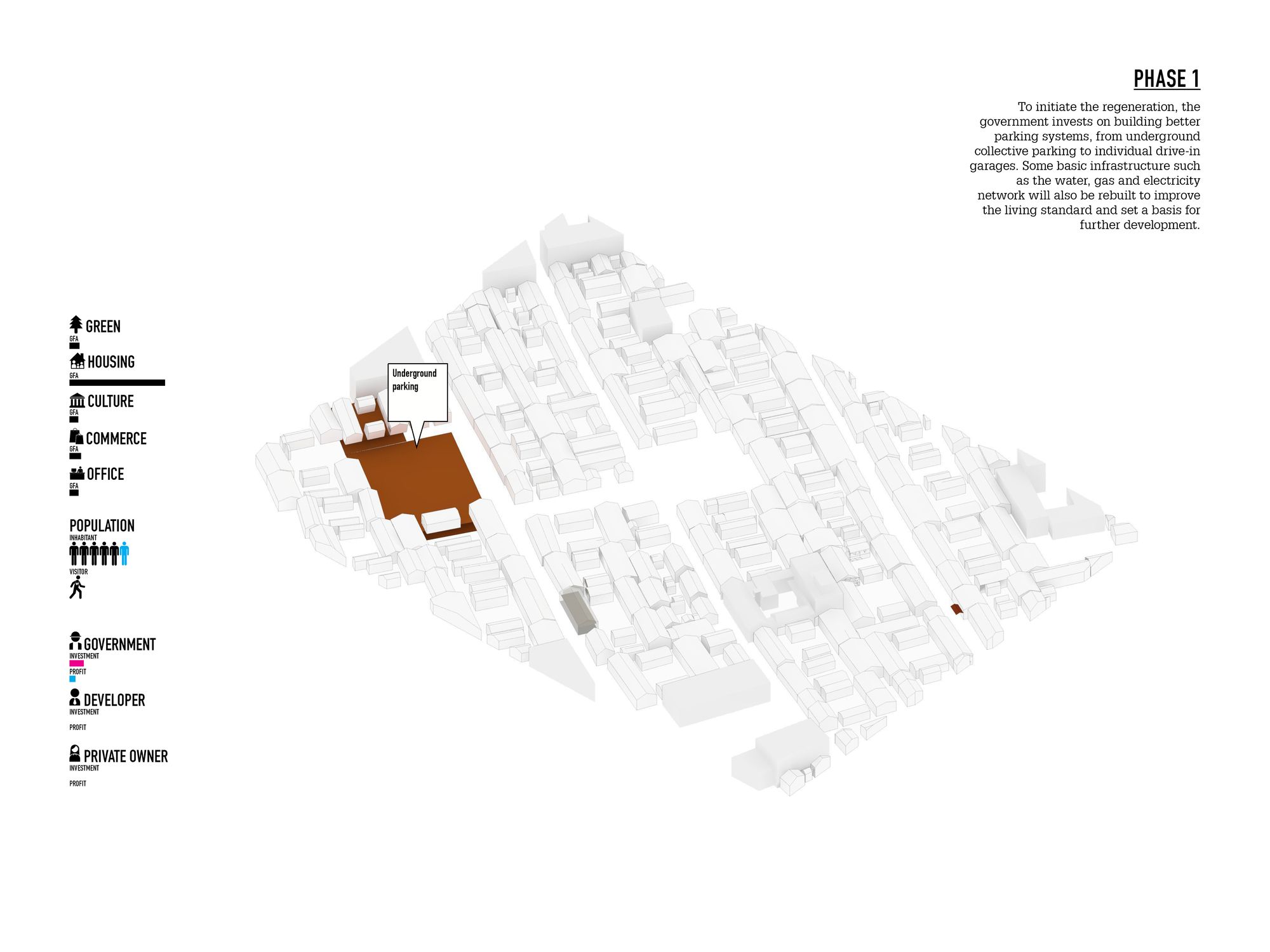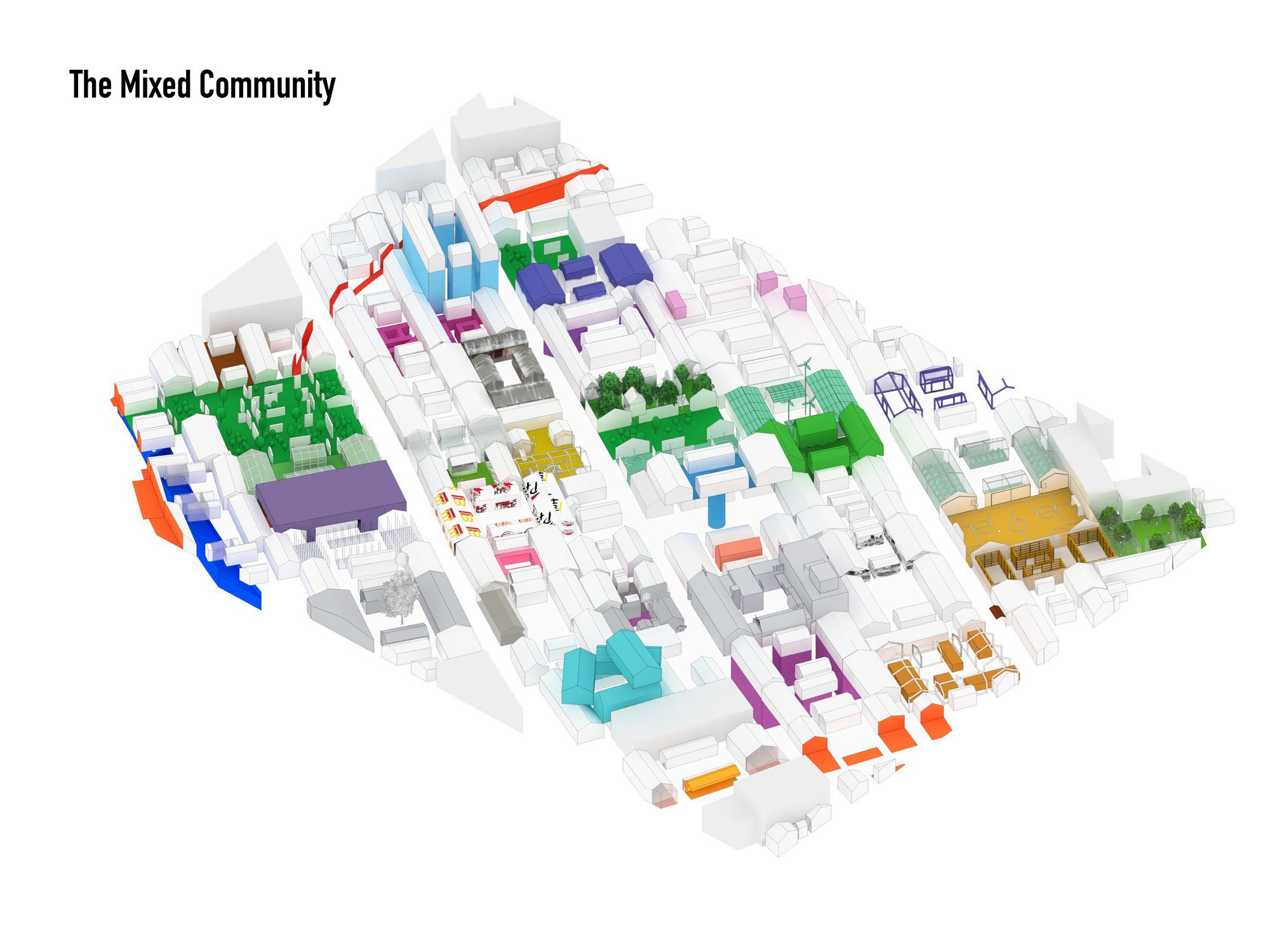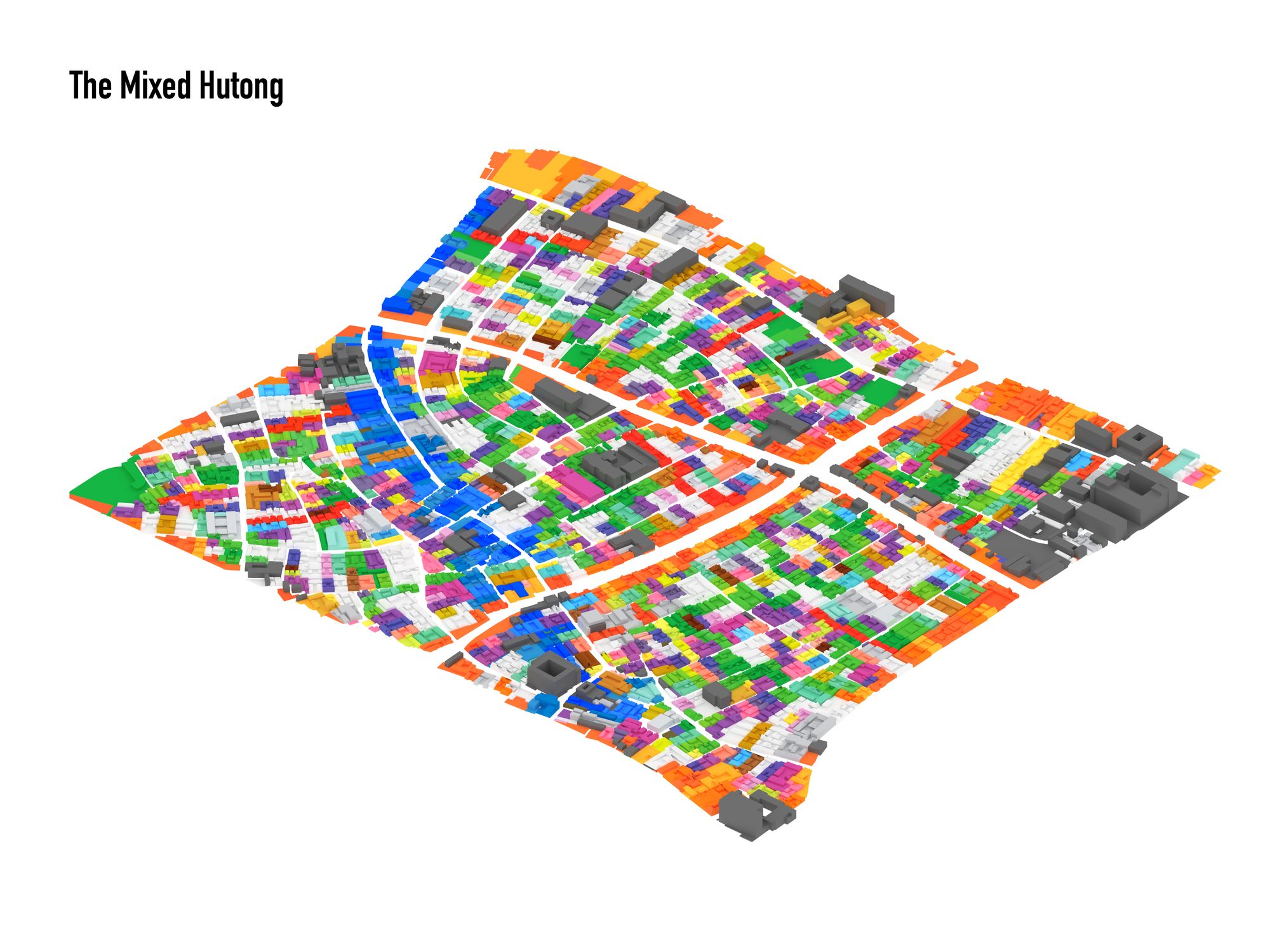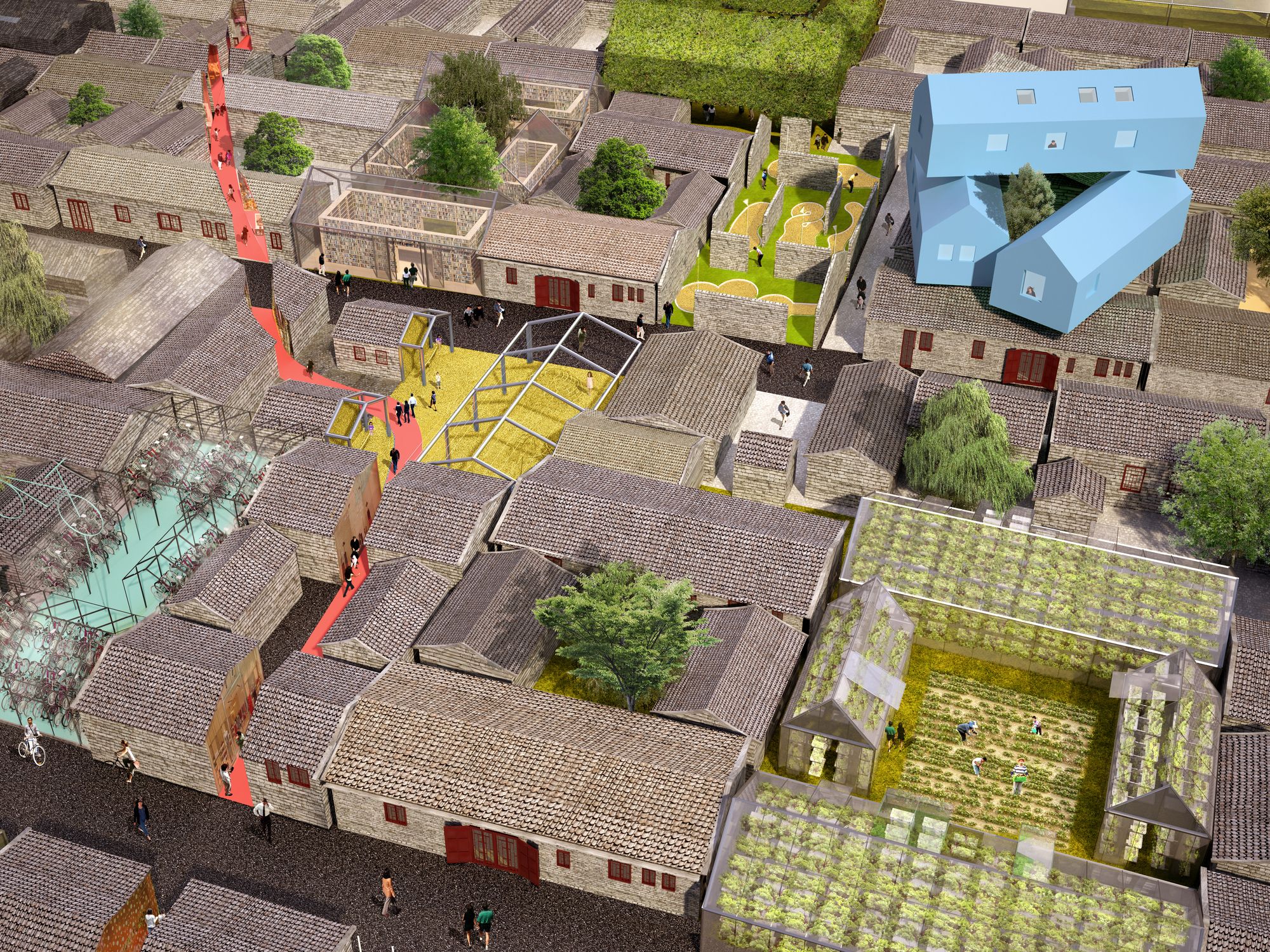Reimagining the Chinese Hutong
Every single person is different and unique, so are even the families. Maybe Feng Shui can’t make it, but MVRDV can reimagine the Chinese Hutong. Focusing on Beijing’s prominent and currently vacant Xianyukou Hutong, the practice has set out to define its future and envision ‘the next hutong’ – one that is ‘monumental, dense, green, mixed and individual’ and can be built in phases.
The Xianyukou Hutong, located next to Beijing’s Tiananmen Square, is waiting for redevelopment. Its inhabitants have moved to other locations and it has been left almost entirely vacant. Because of the Hutong’s prominence in central Beijing, it is a highly visible project, and the moment when a decision is made requires a huge amount of responsibility. This is a remarkable moment to reflect on the Hutong developments over the last decades and to create a better model for the future.
For centuries Hutongs have been the standard form of settlement for Chinese populations that moved from the countryside to the growing cities. The settlement combines the life values and organizational model of classic rural villages at high urban densities: three to four buildings around a courtyard housed bigger families together. Surrounded by walls, the Hutong guaranteed the classical intimacy of the family life within denser circumstances. It combined privacy with density and flexibility with organization. From its origins to today, Hutongs evolved according to changing demands over time.
The development of the Xianyukou Hutong has been delayed in comparison to other surrounding areas, which creates an enormous potential for the area. Its proximity to Tiananmen Square makes it highly significant. It demands a cultural, even political viewpoint on its development, which bridges the future with the past. No masterplan or grand design, but a strategy for development.
This development strategy can be implemented in a gradual manner. Step by step it can be realized, starting from a small courtyard, to plot-based interventions, gradually transforming and upgrading the area. By providing basic infrastructure and communal facilities, the government can play an important role in promoting further development. Private investors will bring diversity and creative atmosphere to the area. It is considered as a never ending process that is flexible for future demands.
The project is a transition from luxury homes to affordable apartments and from houses for the elderly to those of the young. Whether ‘azalea’ or ‘bamboo gardens’ filling both dense and spacious plots, both commercial and residential plots, all made by different future owners and architects, next to one another. The proposal creates a sort of building exposition where different projects, interventions, interpretations and strategies can be tested and displayed, thus testing and displaying the possible future development of ‘the next Hutong’.
Project Information :
Architect : MVRDV
Location : Beijing, China
Total Area : 3,400 square meters
Design Team : Winy Maas, Jacob van Rijs and Nathalie de Vries with Wenchian Shi, Kyosuk Lee, Ting Wen , Michael Zhang, Jaime Bálgoma, Saimon Gomez Idiakez
courtesy of © MVRDV
courtesy of © MVRDV
courtesy of © MVRDV
courtesy of © MVRDV
courtesy of © MVRDV
courtesy of © MVRDV
courtesy of © MVRDV
courtesy of © MVRDV
courtesy of © MVRDV
courtesy of © MVRDV
courtesy of © MVRDV
courtesy of © MVRDVv
courtesy of © MVRDV
courtesy of © MVRDV
courtesy of © MVRDV
courtesy of © MVRDV
courtesy of © MVRDV
courtesy of © MVRDV
courtesy of © MVRDV
courtesy of © MVRDV
courtesy of © MVRDV
courtesy of © MVRDV
courtesy of © MVRDV
courtesy of © MVRDV
courtesy of © MVRDV
courtesy of © MVRDV
courtesy of © MVRDV
courtesy of © MVRDV
courtesy of © MVRDV
courtesy of © MVRDV
courtesy of © MVRDV
courtesy of © MVRDV
courtesy of © MVRDV
courtesy of © MVRDV
courtesy of © MVRDV
courtesy of © MVRDV
courtesy of © MVRDV
courtesy of © MVRDV
courtesy of © MVRDV
courtesy of © MVRDV
courtesy of © MVRDV
courtesy of © MVRDV
courtesy of © MVRDV
courtesy of © MVRDV
courtesy of © MVRDV
courtesy of © MVRDVcourtesy of © MVRDV
courtesy of © MVRDV
courtesy of © MVRDV
courtesy of © MVRDV


